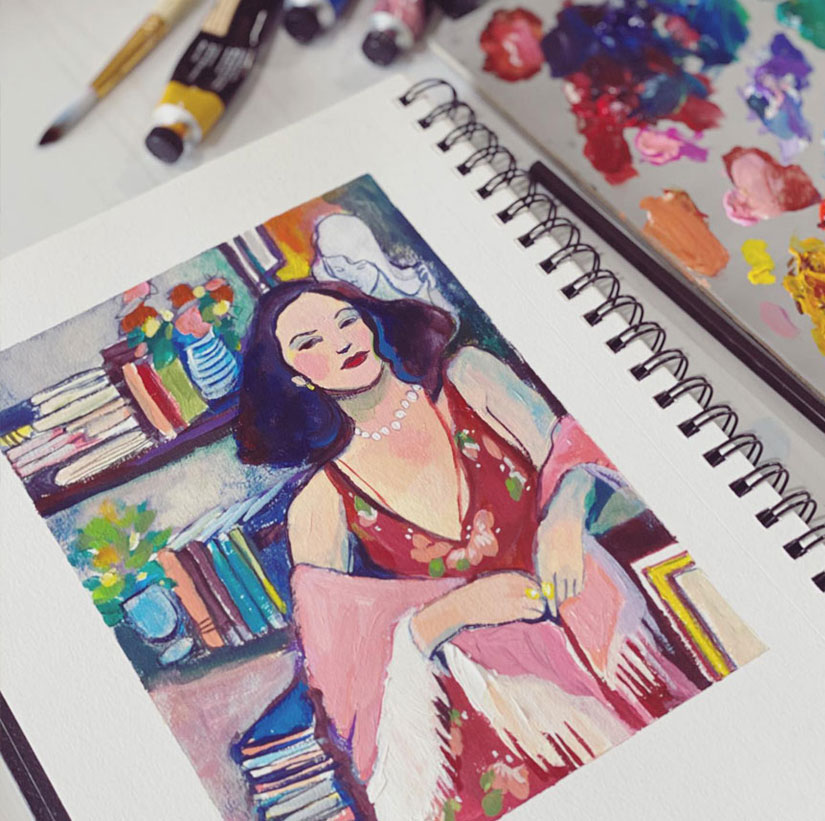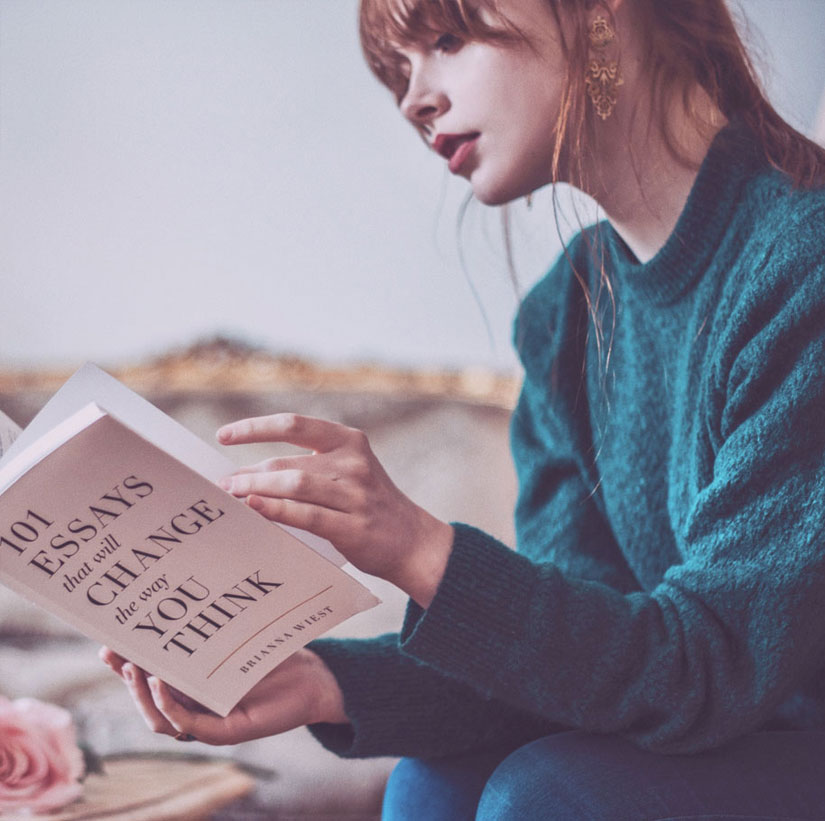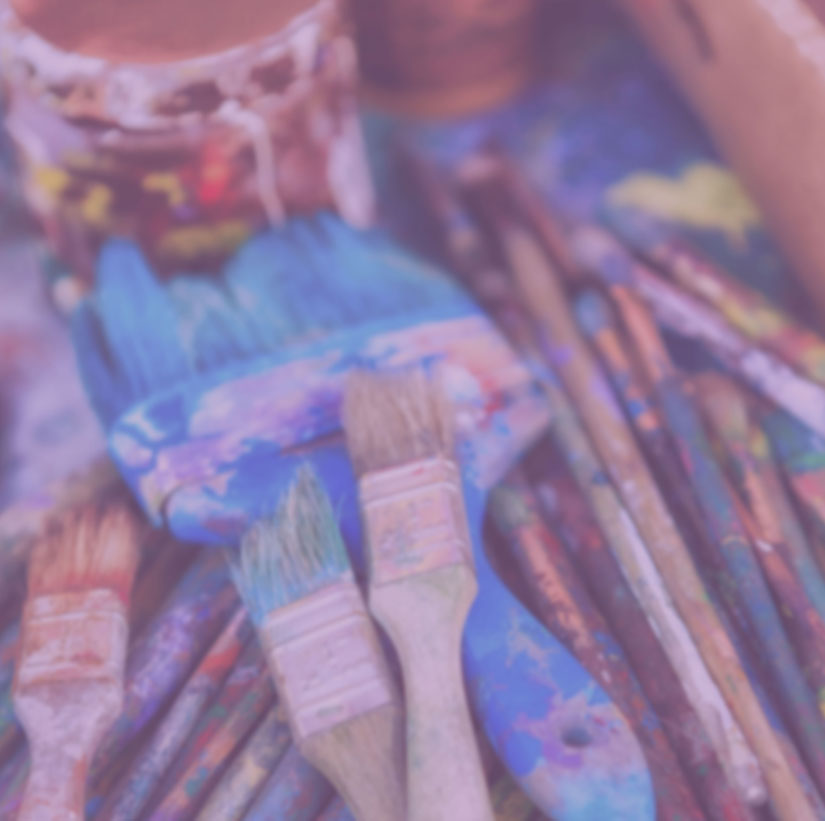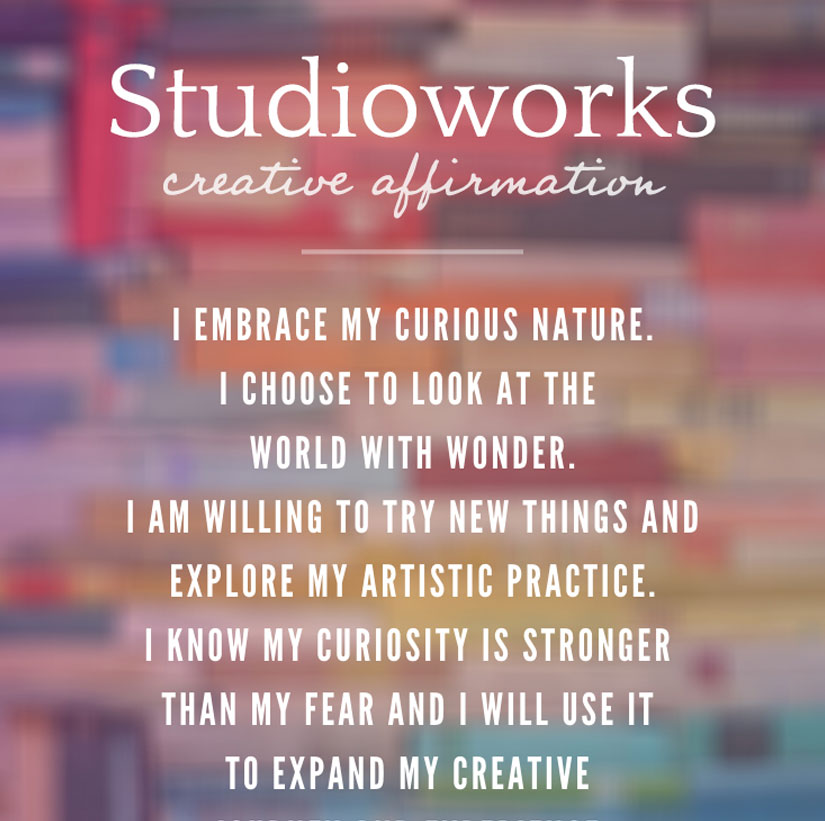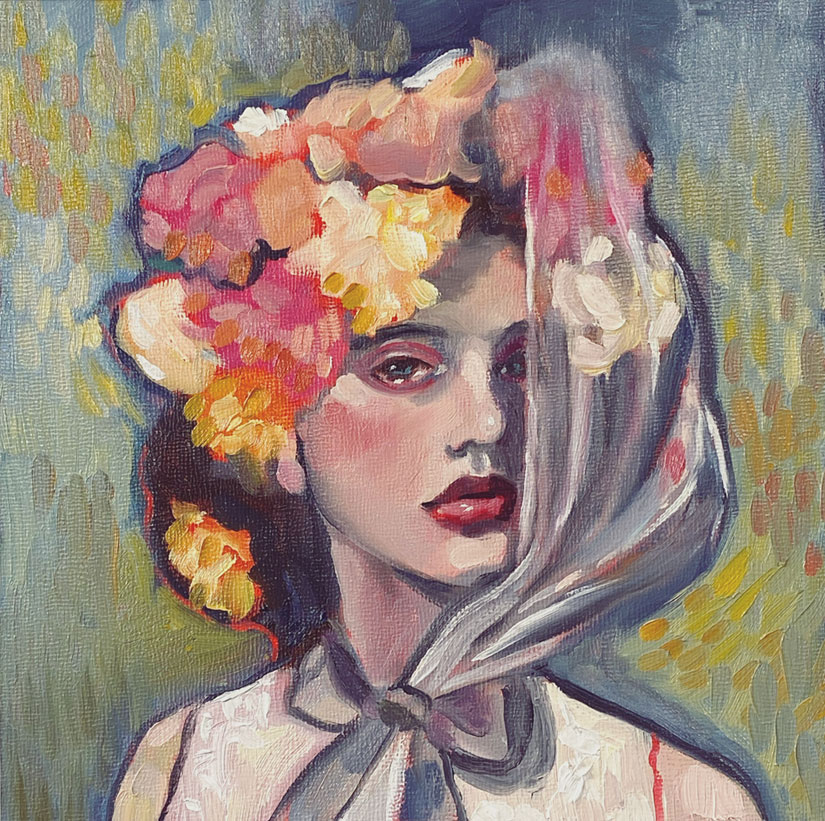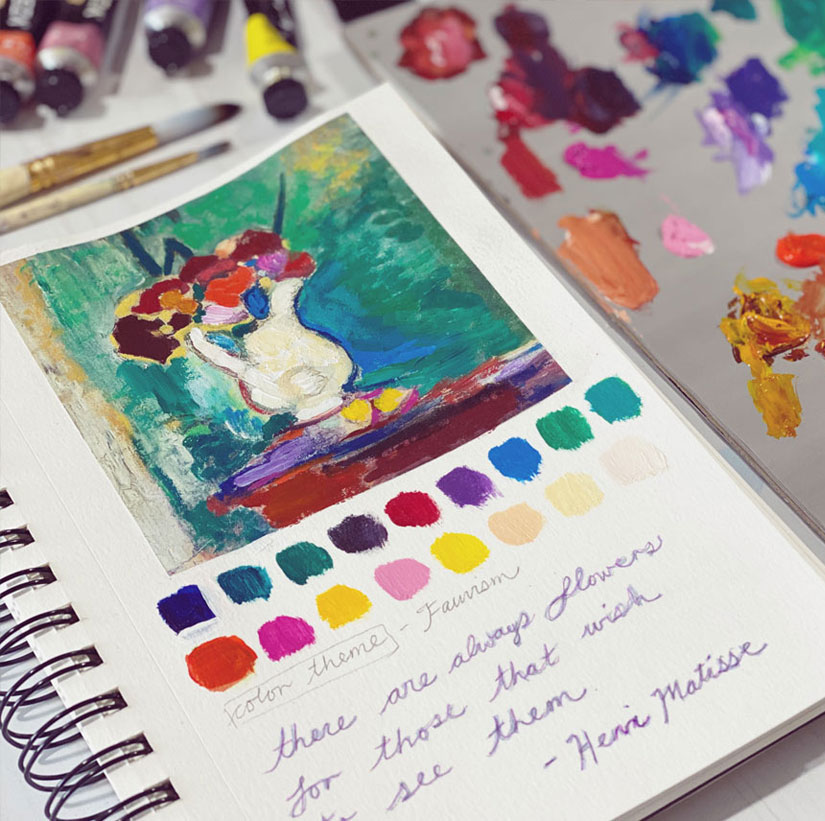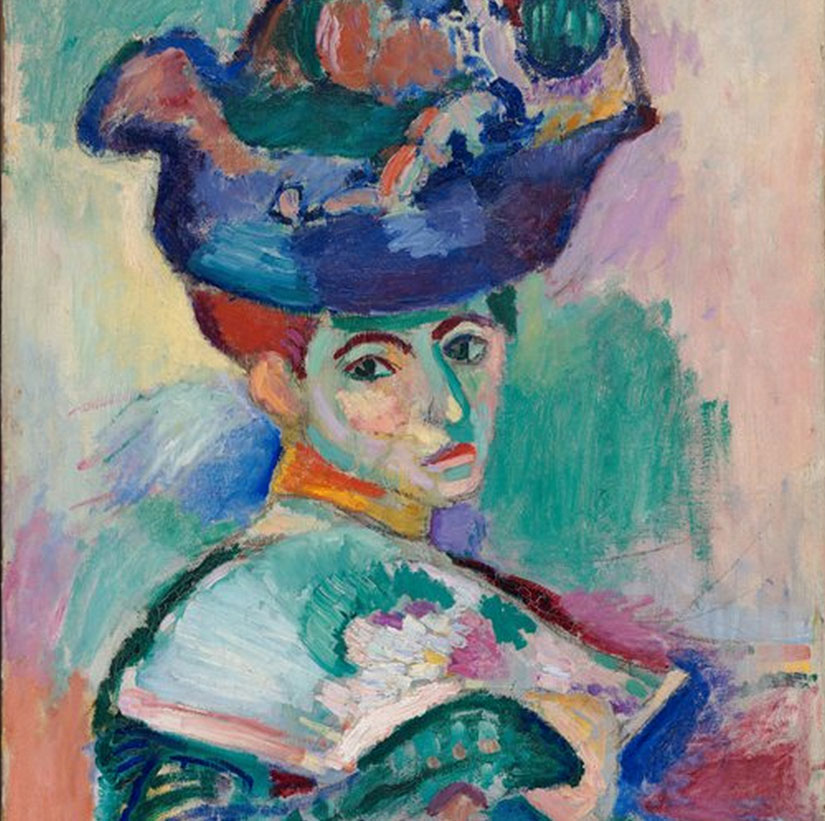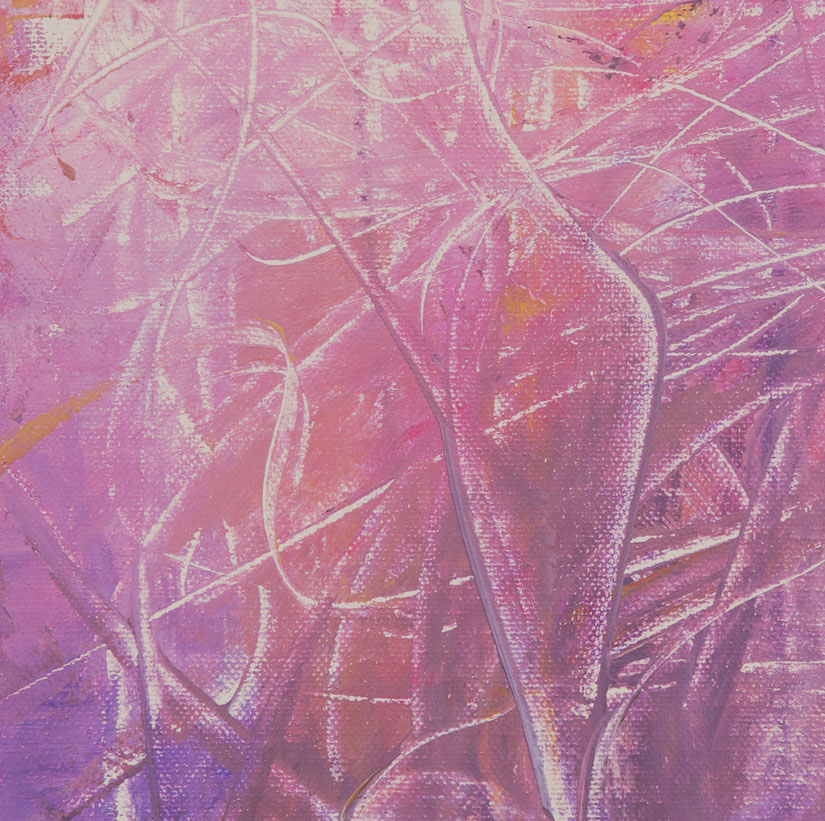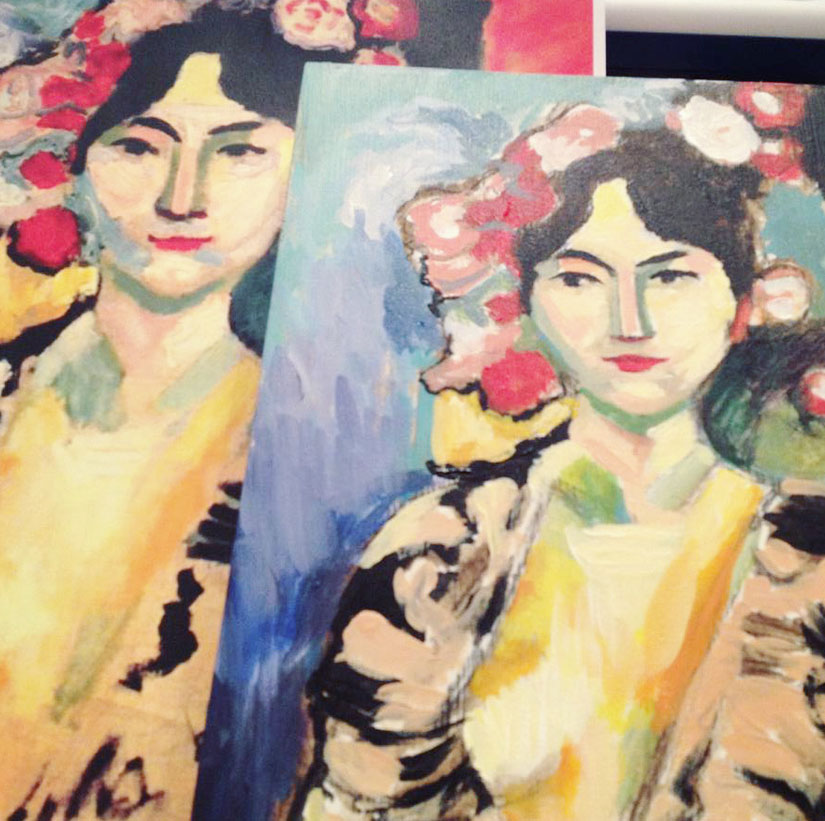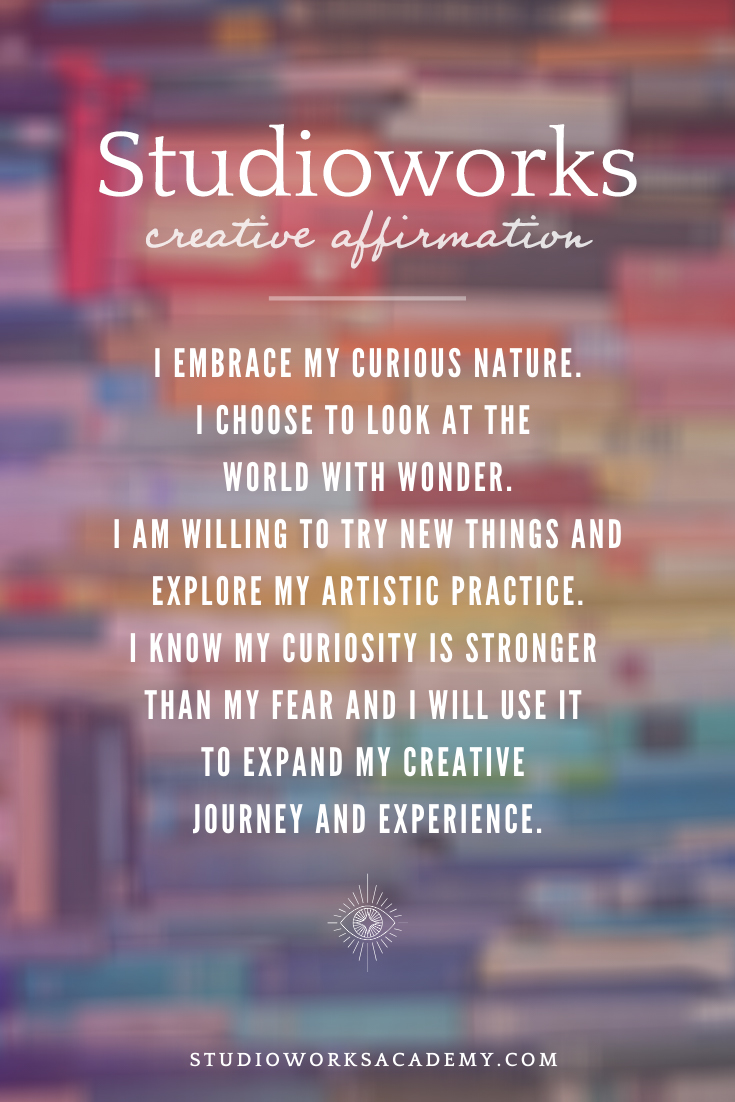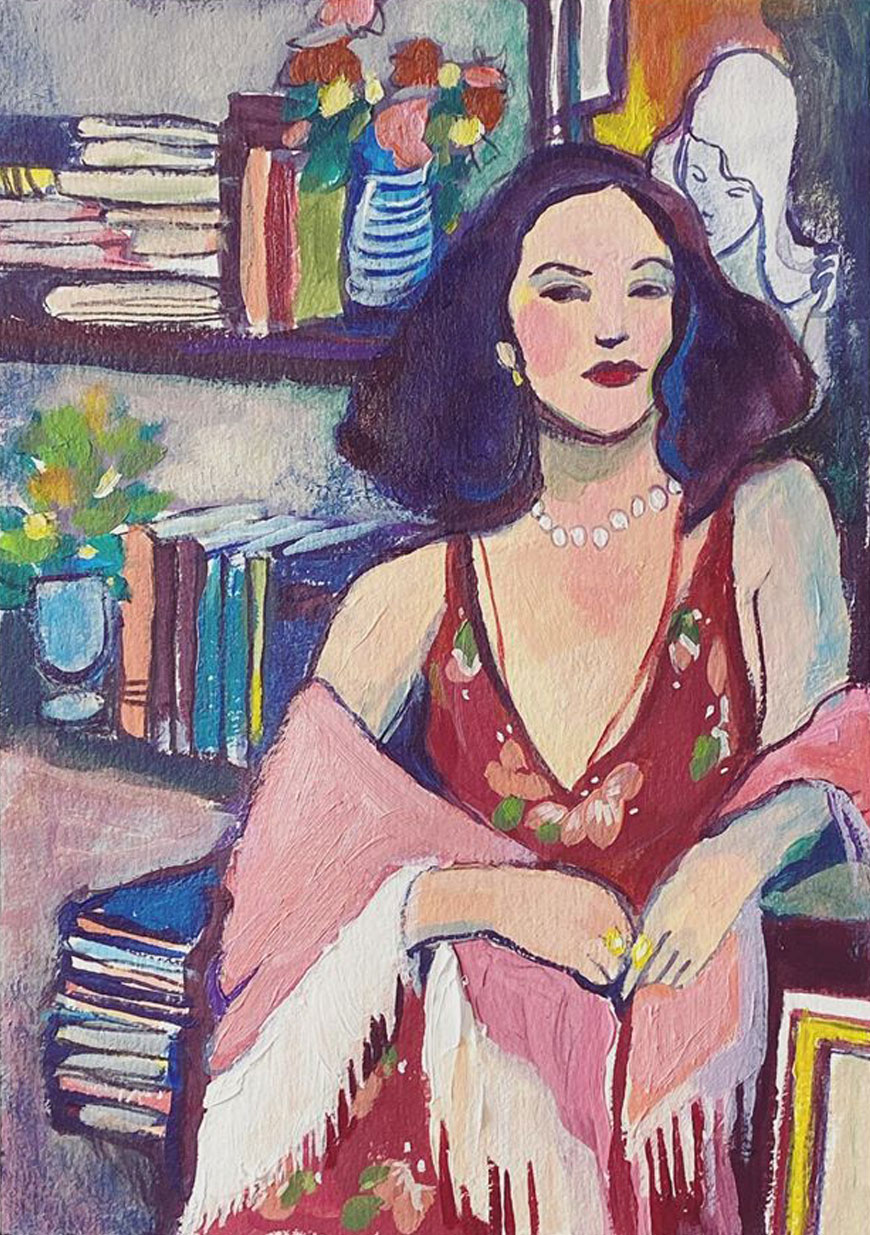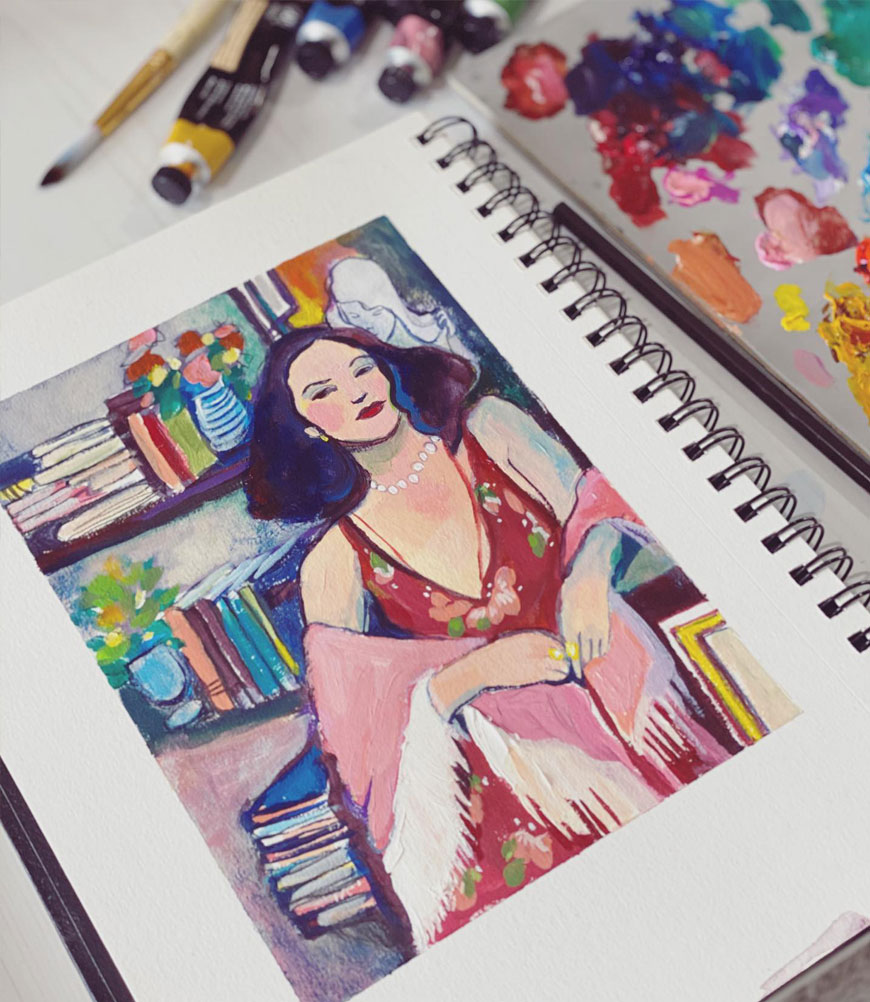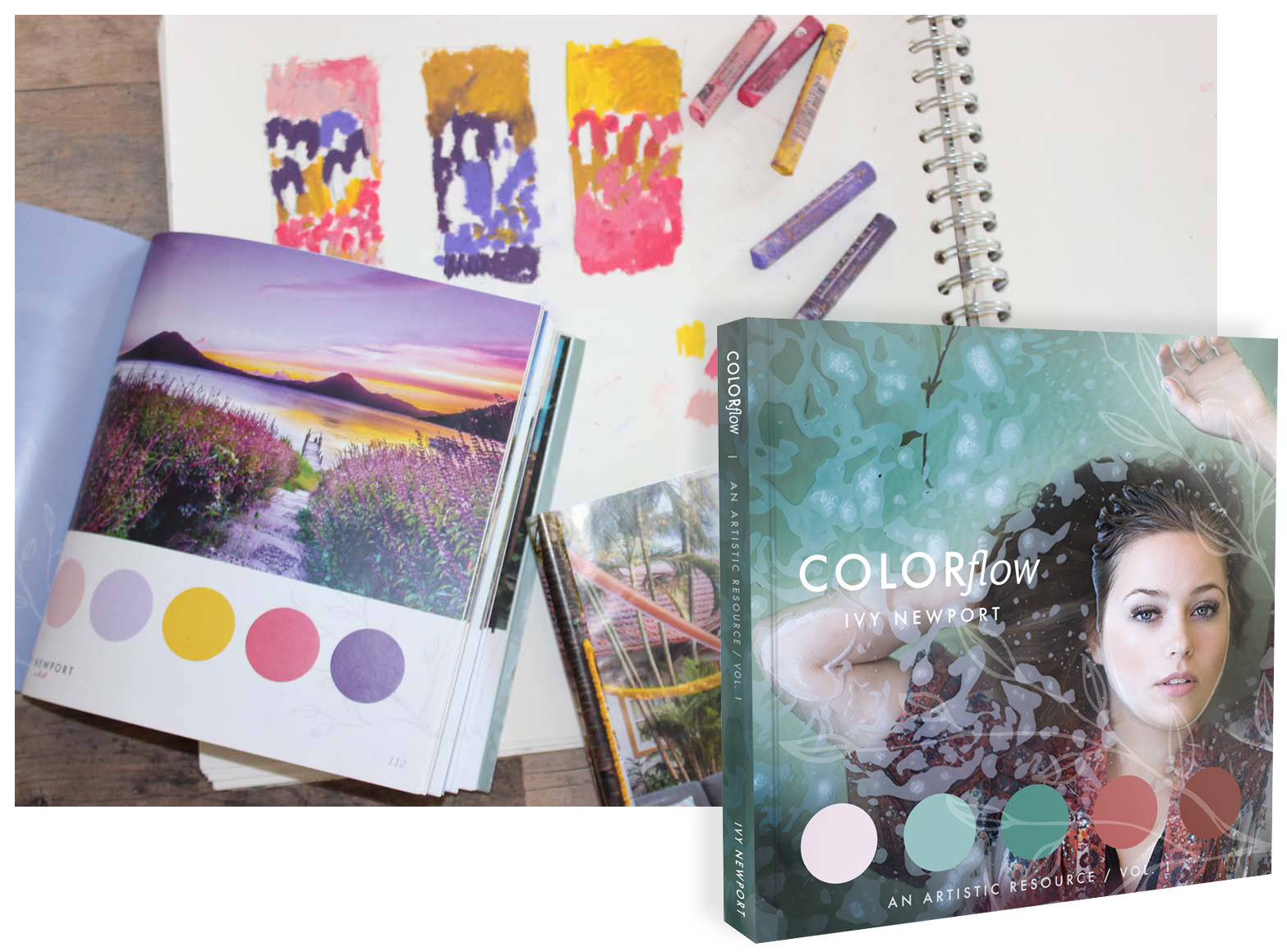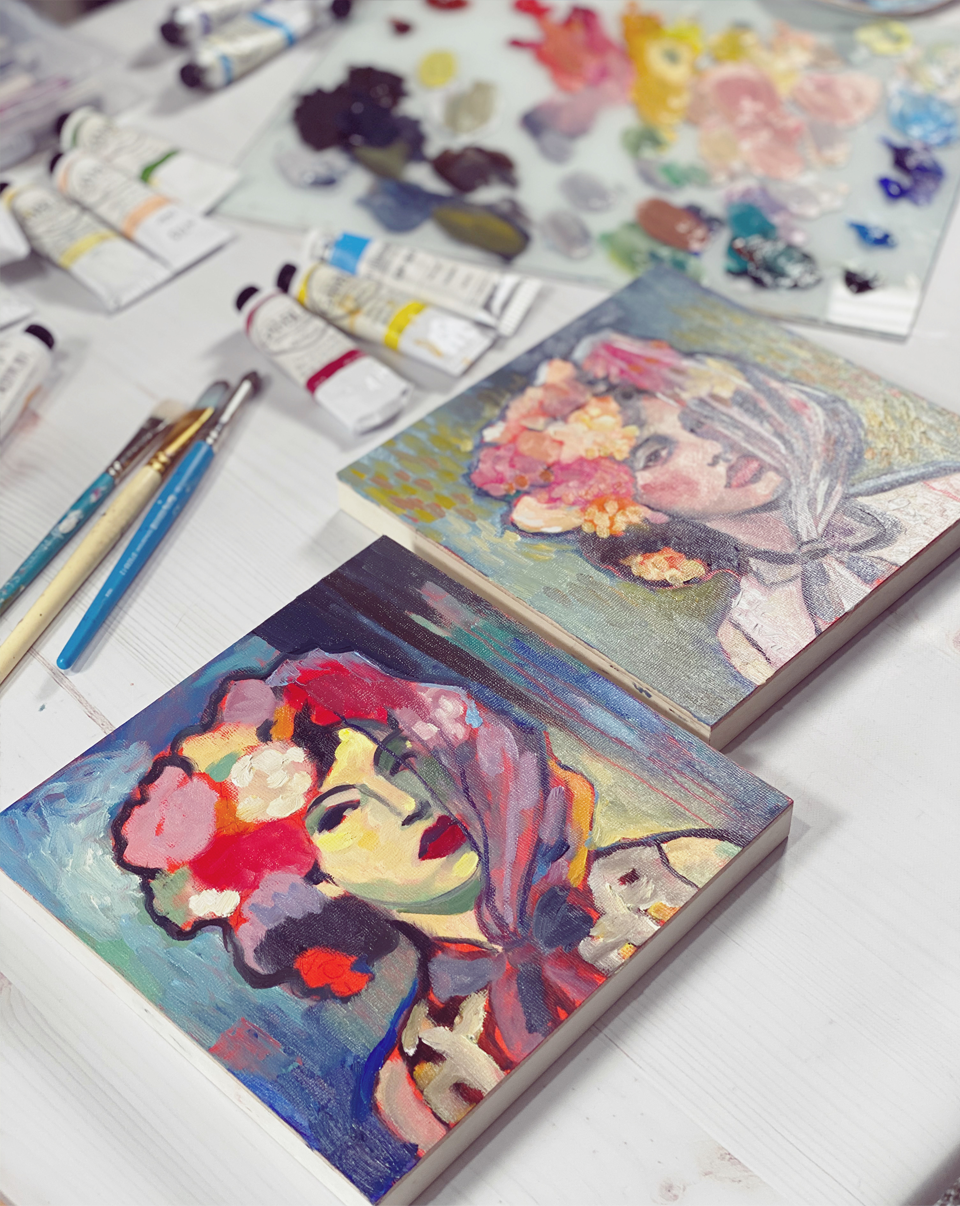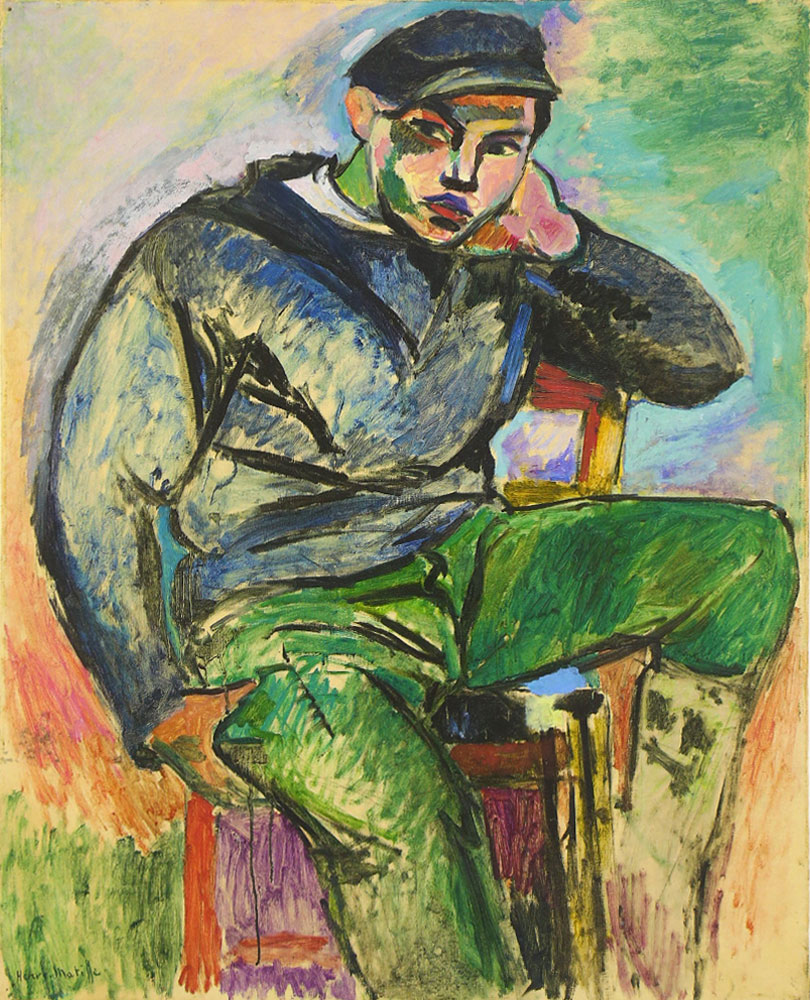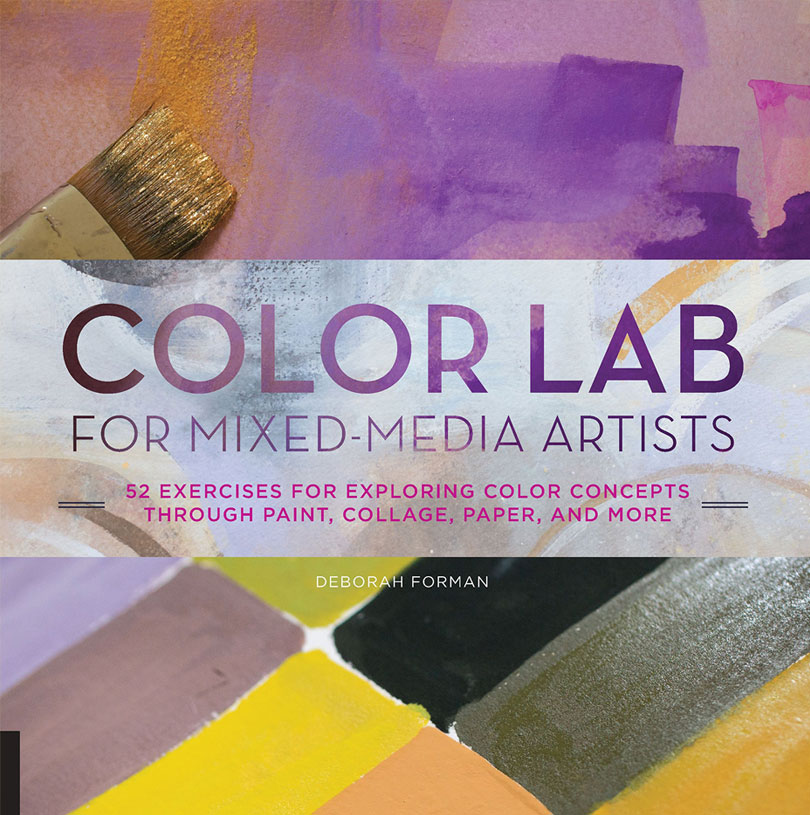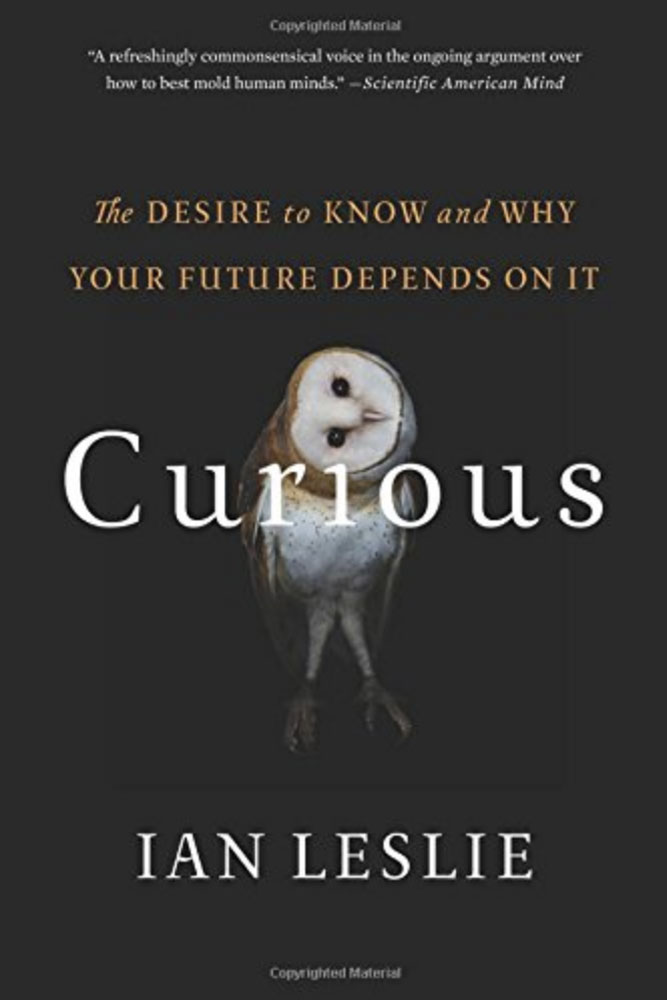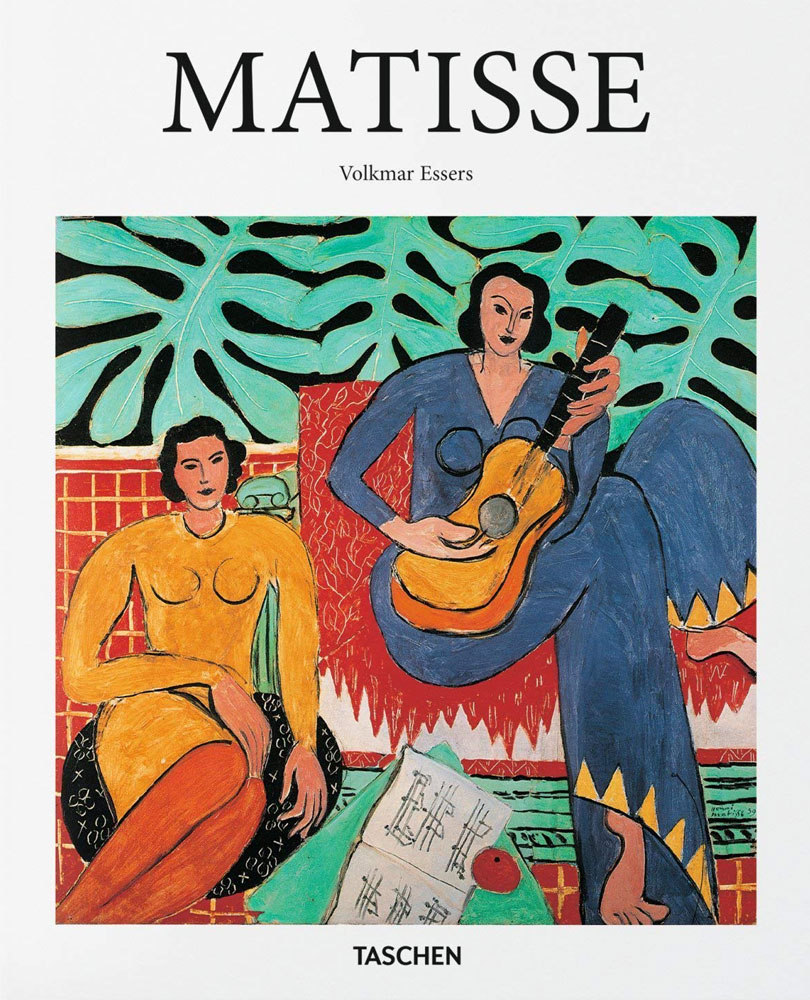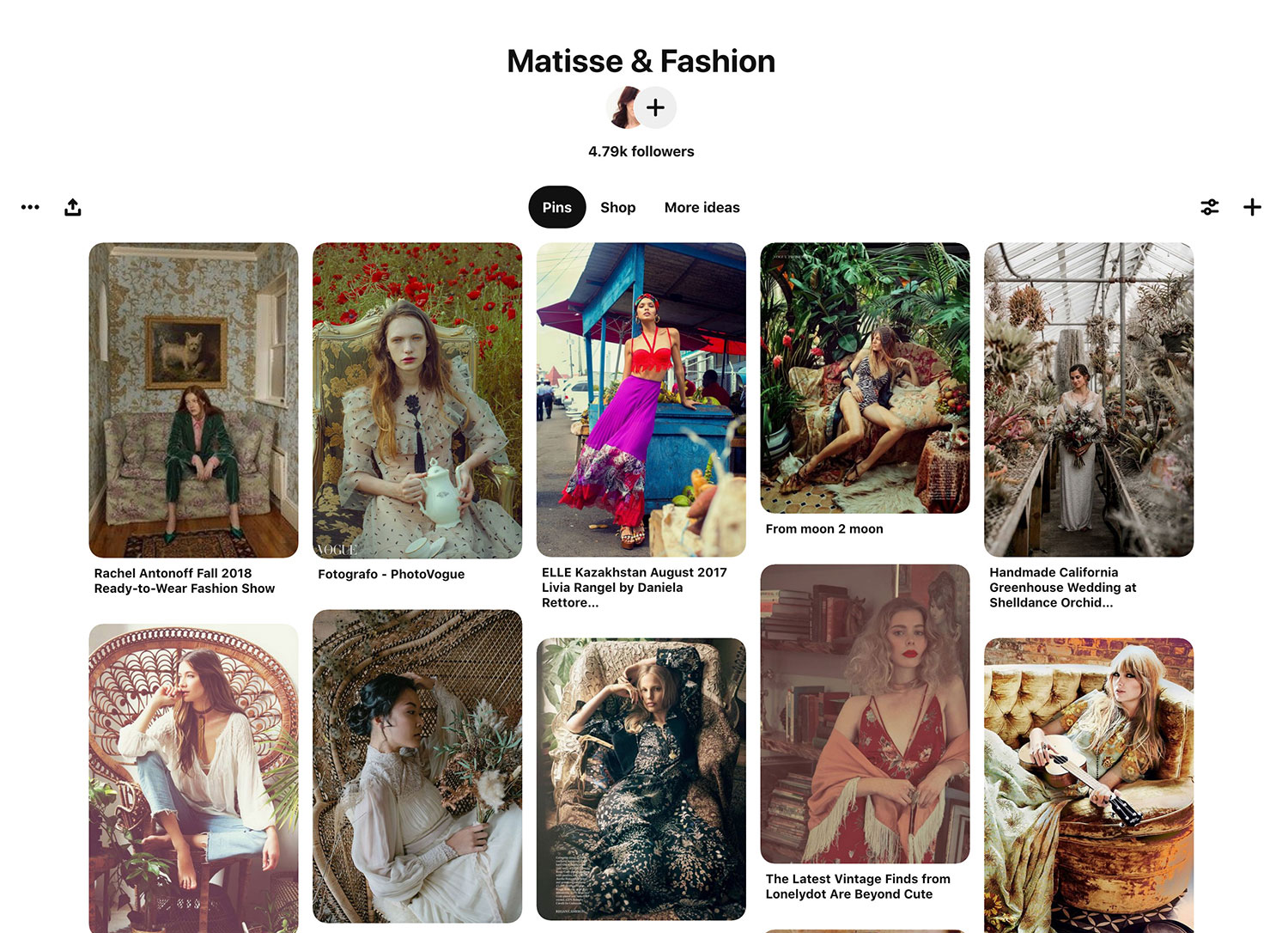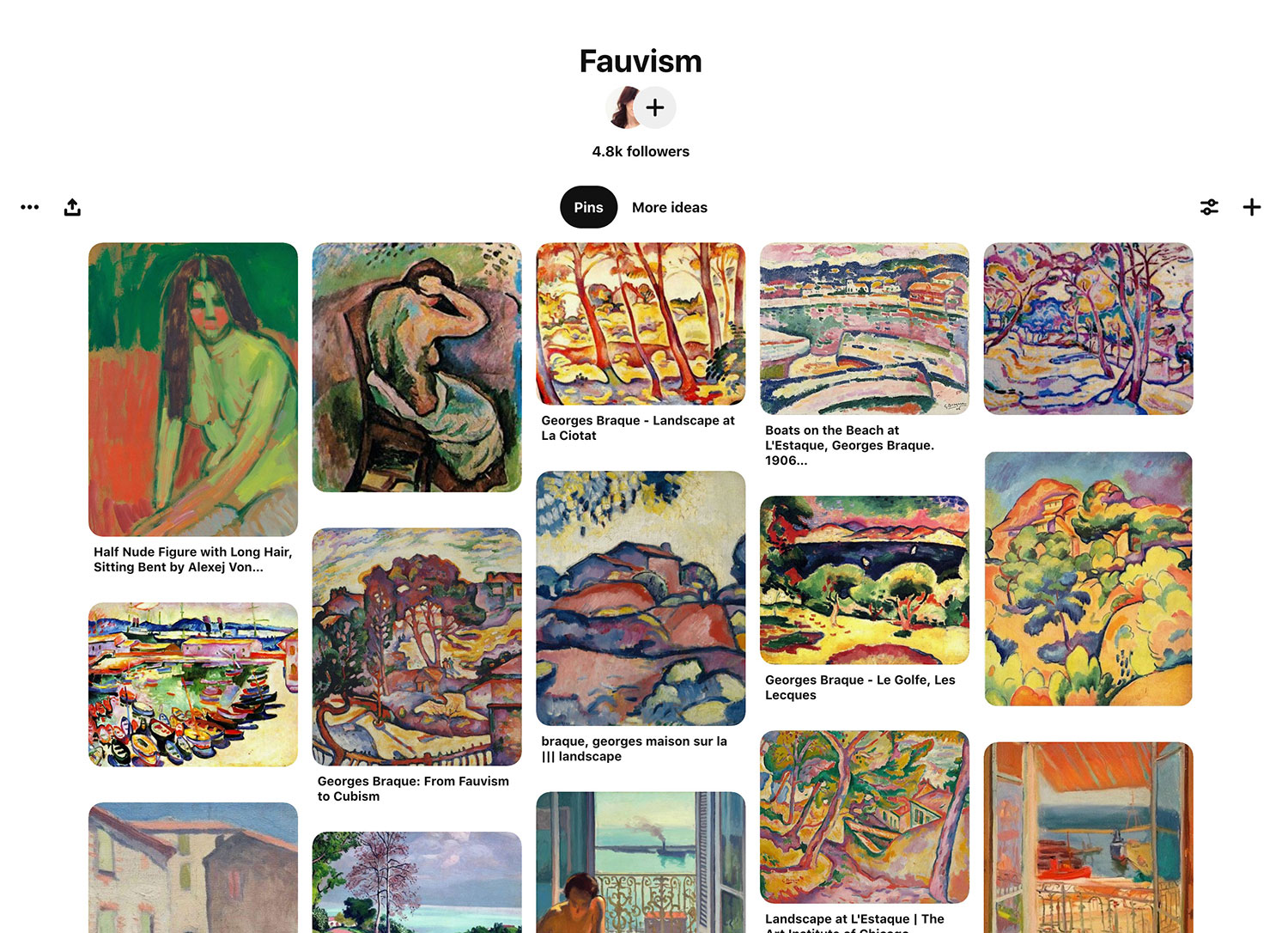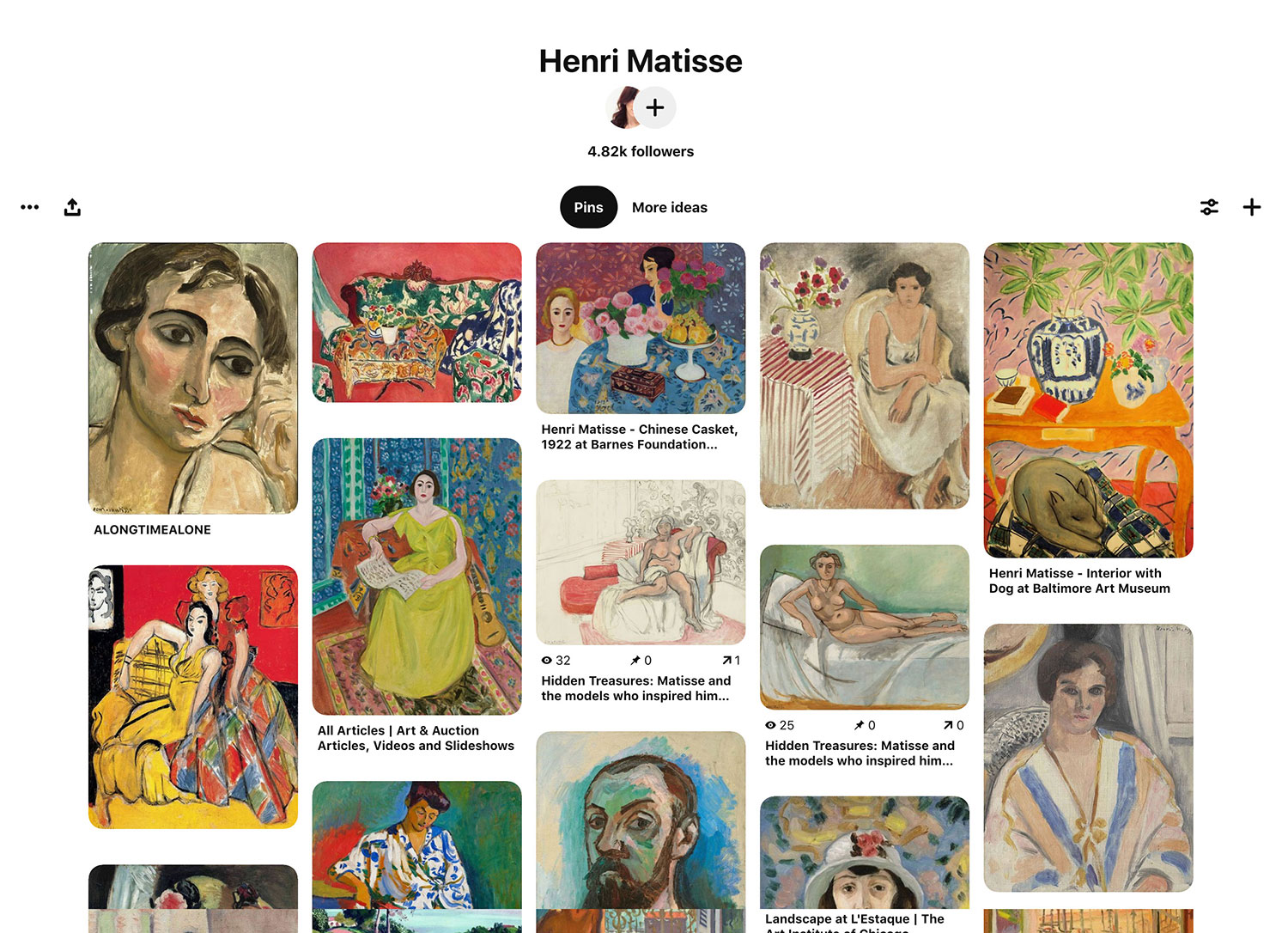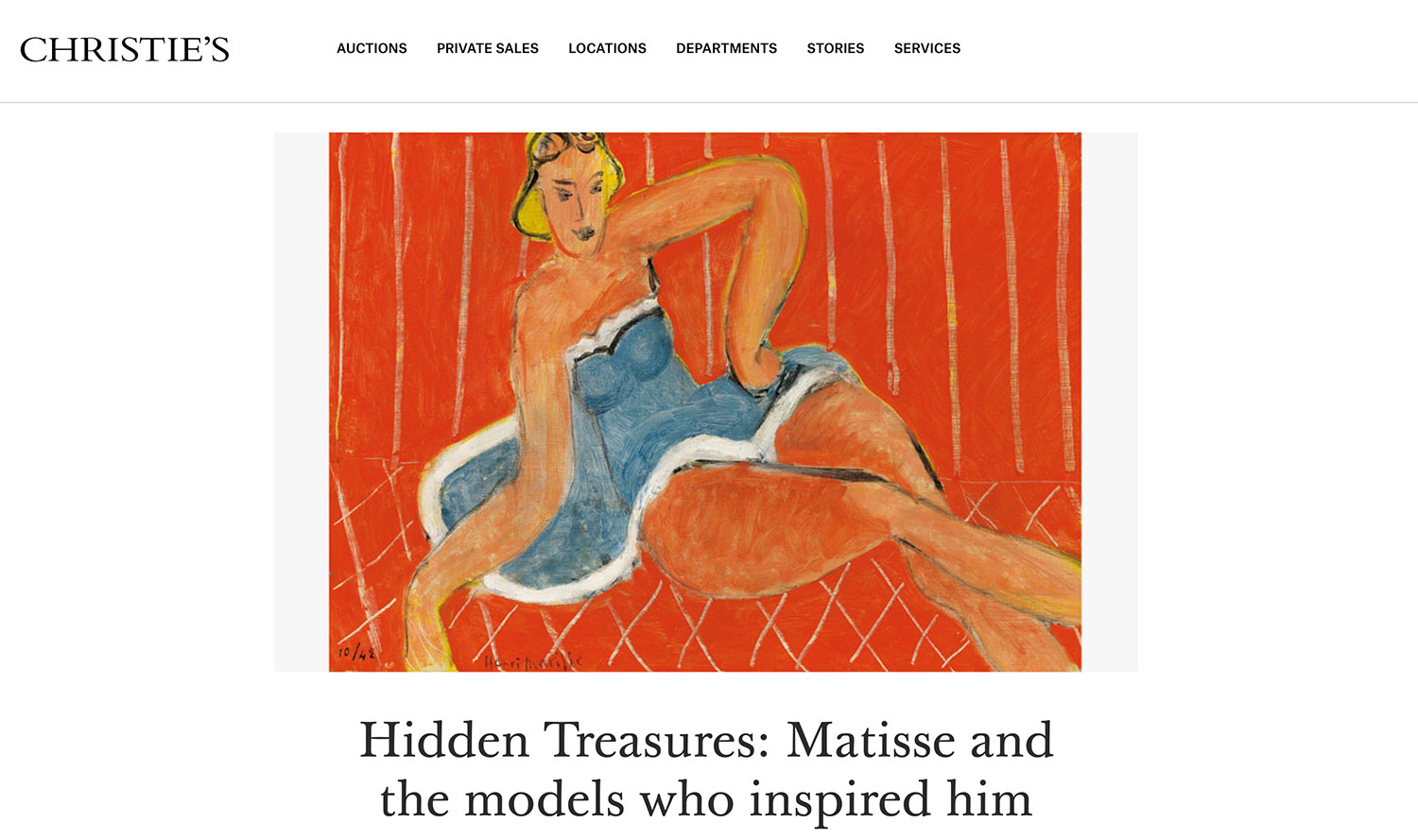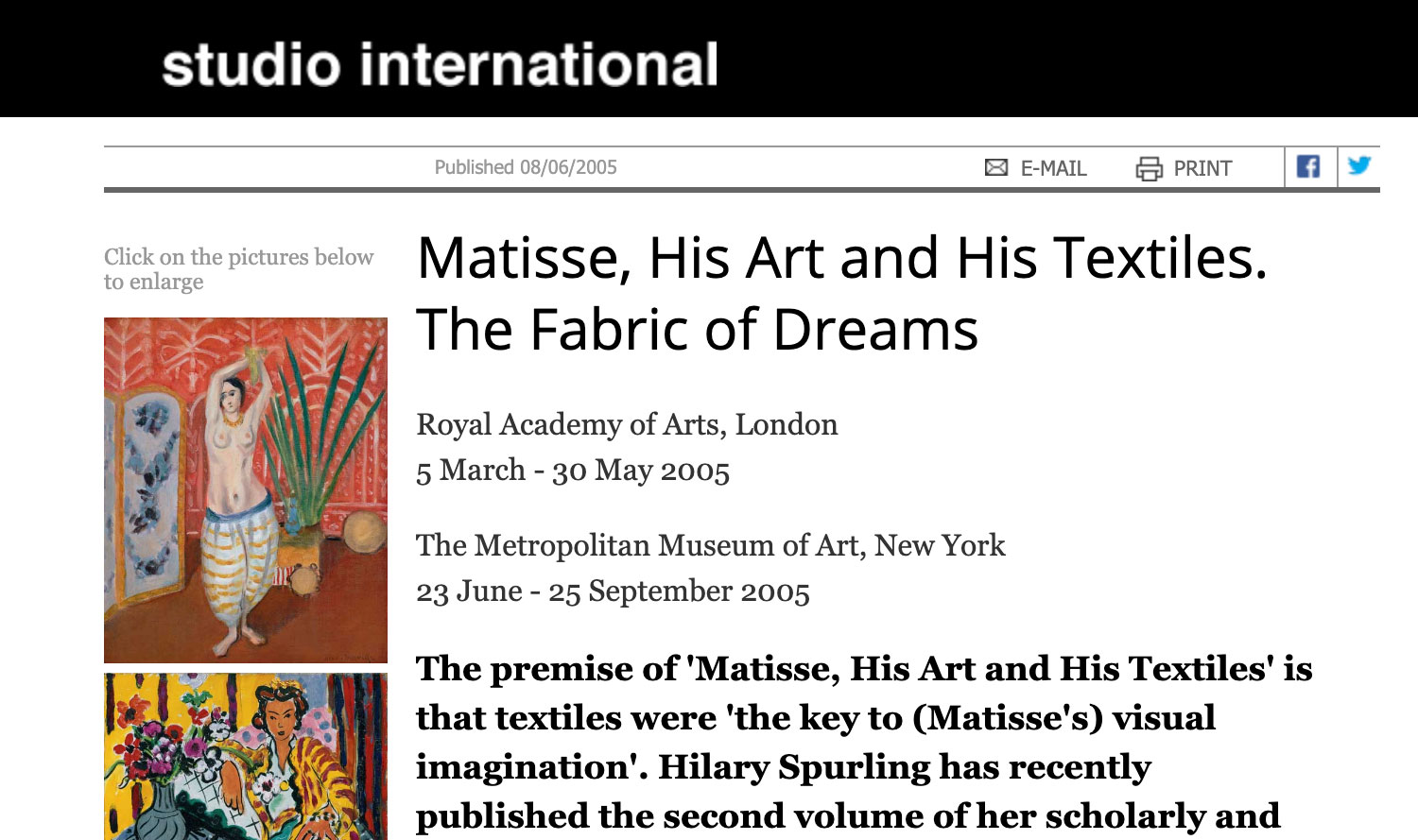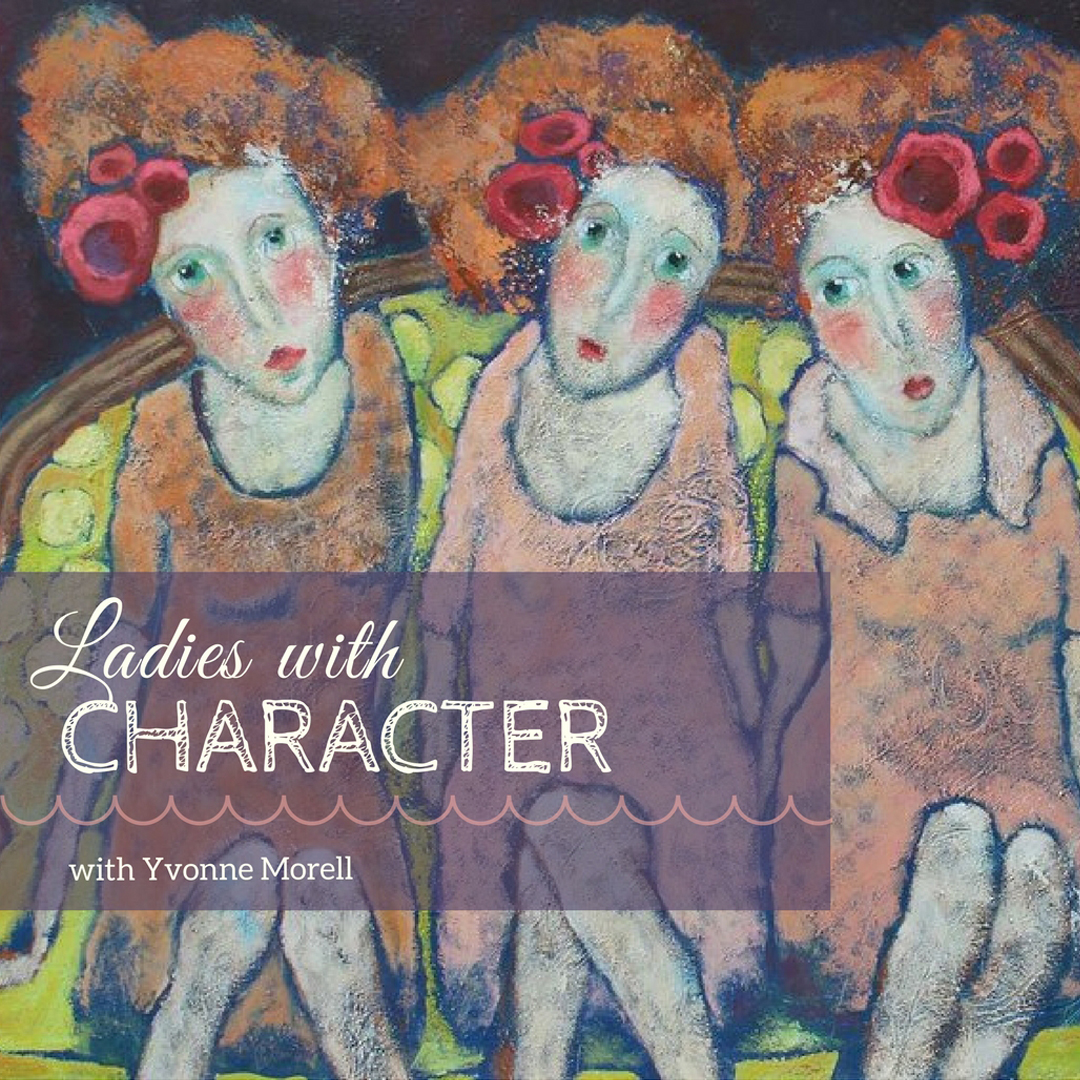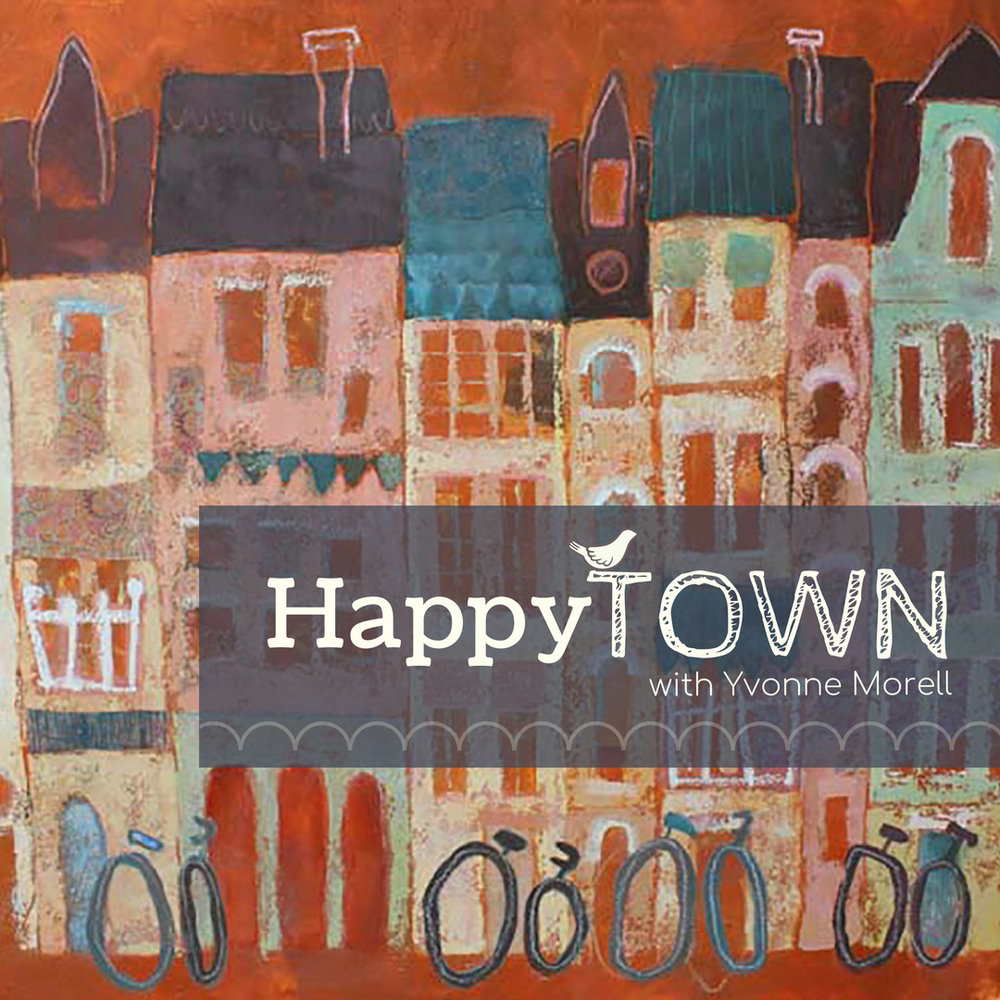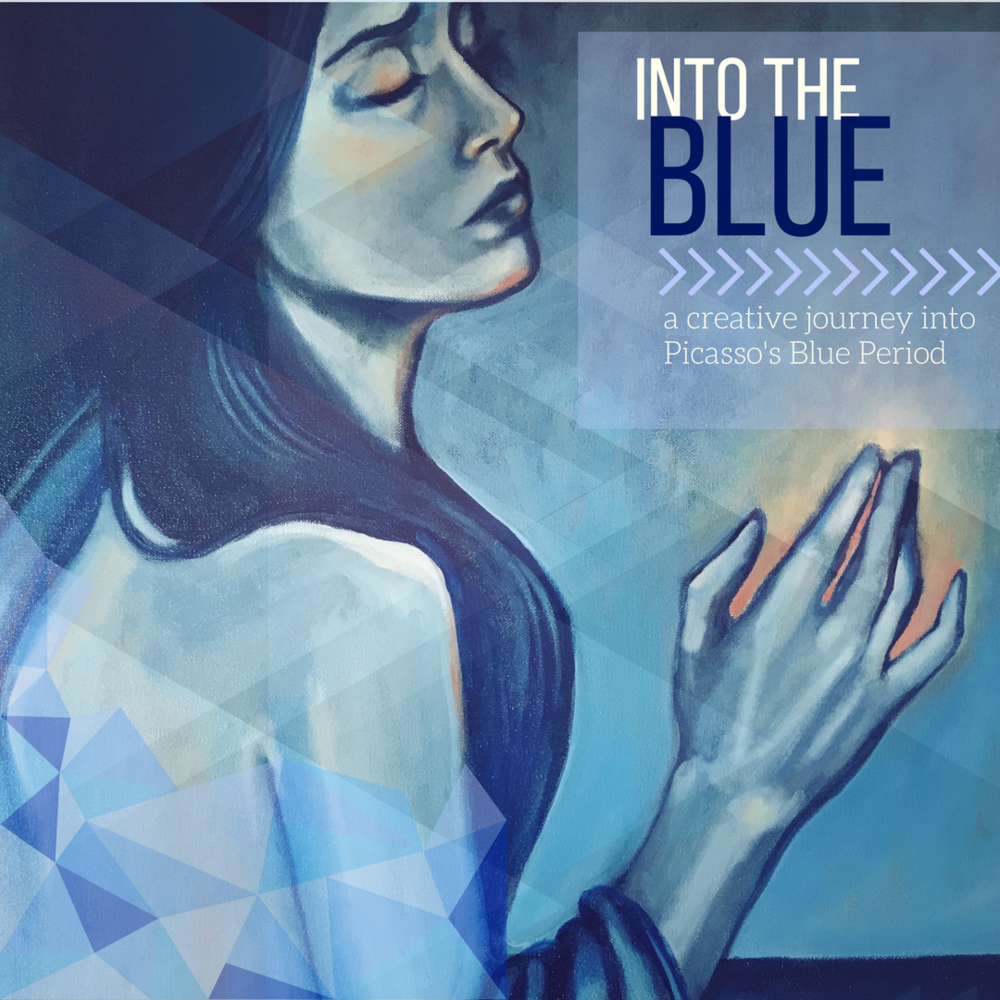IVY NEWPORT
Studioworks
Journal
a letter from ivy
Dear creative friends,
Welcome to Issue #18 of the StudioWorks Journal! As always, I’m super grateful you are here with me and I’m excited to share this with you. This month, I wanted to explore the importance and power of curiosity. This potent aspect of being human is an essential part of creativity. Your curiosity will lead you to joy, discovery and the unfolding of your creative path.
Never stop being curious.
xo,

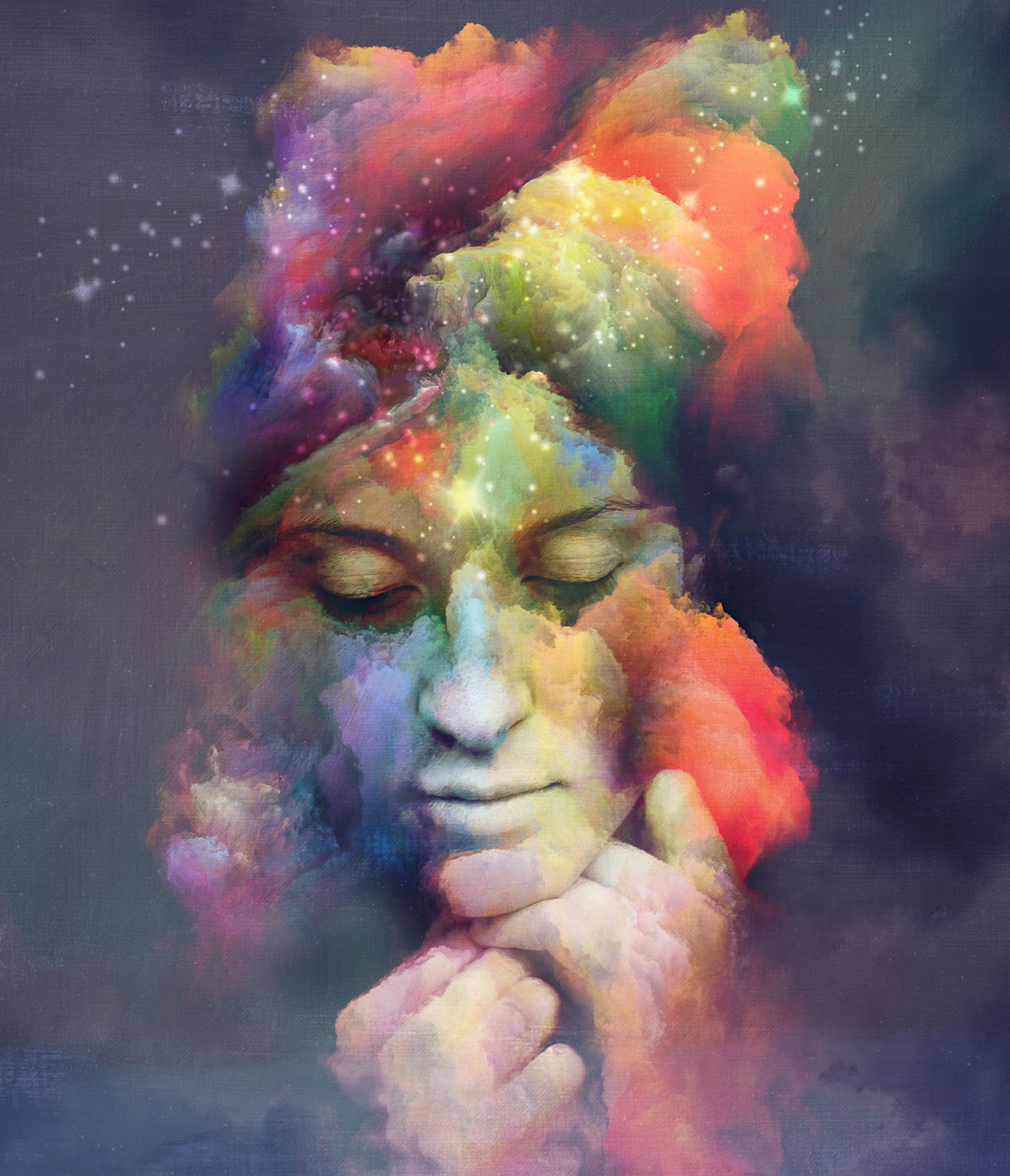
So you may be wondering, where do I start? To that, I say, wherever feels right to you. Each month we will have a theme, a creative affirmation, a power word, a color palette, sketchbook exercises, art projects, articles, recommended reading and access to wonderful inspiration and resources. I want you to think of this as a delicious new magazine, you know the ones you occasionally splurge on, with soft, velvety pages, beautiful images
Each issue will invite you to explore your creative practice in whichever way works for you. Experience each issue at your own pace. Take what resonates with you and put the rest aside for another time.
Grab a cup of something lovely and dive in.
MONTHLY THEME
Your Curious Nature
“Curiosity – it keeps us moving forward, exploring, experimenting, opening new doors.”
– Walt Disney
Indeed, curiosity keeps us leaning into life. It sparks a yearning for more, a desire for wonder and a hunger for experience. When we are curious, we can move past fear and be open to learning. So often, especially as we age, curiosity is replaced with caution.
“What if?” is replaced by “Why risk it?” The eternal child, our inner artist innately has an abundance of curiosity – our creative energy is fueled by it. So, why then, do we resist it? One word – fear. Fear of failure. Fear of the unknown. Fear of ridicule.
So what’s one to do? Strengthen your curiosity. Hone it. Target it with laser focus. Get clear about what things in this wide, expansive universe captures it. What did you wonder about when you were a child? What places excite you? What stories enchant you? What artists fascinate you? Go dig around in these places. Unearth the inspiration that lies within.
You see, if we can heighten our curious nature, we can use it to push past the fear. We can get excited about the “What if’s?” We can endure the discomfort of the unknown. The crippling dread of mistakes. So get real friendly with your curious nature. Ask questions. Wonder. Try new things and embrace the experience of learning.
“Curiosity will conquer fear even more than bravery will.”
– James Stephens
CURIOSITY & IMAGINATION
As artists, we so often wish to be better, we wish to be like this person or create like that person but we so often forget that the power of curiosity is our own. We look outside ourselves instead of within. See what amazing things lie inside you, just beneath the surface. Be curious enough to look. Be courageous enough to investigate.
Curiosity is powerful. Why? Because it is the beginning. It is the precursor to imagination and wonder. Without curiosity, we do not wonder. Without wonder we do not imagine. Void of imagination creativity does not exist. While passion may drive us, curiosity is the spark. It ignites the mechanism of our imagination.
“Curiosity is the most powerful thing you own.”
– James Cameron
HAPPY & CURIOUS
What if I told you that your curiosity has a direct correlation to your level of happiness? It’s true my friends! Being curious is an active passion for living, for life. It is a divine gift that we have a curious nature. Don’t overlook this incredible aspect of yourself. Elizabeth Gilbert describes it beautifully in her book – “Big Magic”-
“Curiosity only does one thing and that is to give. And what it gives you are clues on the incredible scavenger hunt of your life!”
If we can see our life as a scavenger hunt where curiosity leads the way, it can connect us with a joy and playfulness that often gets buried.
When I write these journals, I often resist, fear overrides my mind at first. Then, I get curious. I wonder…what can we explore? What can we learn? What can we discover? I begin to gather the clues and before I know it…my heart is beating fast with the anticipation of the joy that accompanies the creation of this work. And I’m off and running – my mind buzzing with questions, my whole being engaged in the act of discovery.
Being curious leads us to embrace our lives with more openness, more excitement, more love.
“Curiosity is one of the great secrets of happiness.”
– Bryant H. McGill
WRITING PROMPT:
WHAT ARE YOU CURIOUS ABOUT? Get those journals and sketchbooks out and get ready to do some self-reflection and writing. Try not to judge what comes out of these writing sessions. Don’t worry about punctuation or grammar or any of that. You can even just make lists if that suits you better.
Take a moment to get quiet. Still yourself by doing some gentle breath work. Light a candle. Now ask yourself – “What am I curious about?”
It could be ANYTHING. Anything at all! It doesn’t have to be exciting or life shattering or trendy or anything. There is NO wrong answer here. Just be quiet and listen. When you ask this of yourself, what comes up? What whisperings do you hear from within?
It could be everything from Egyptian mythology to how to mix colors. It could be growing tomatoes in your garden to stitching fabric. It could be the birds outside your window or sculpting with clay.
Write down anything you hear or feel! These are your clues! Clues as to where to put your focus, where to go spend a little more time, to dig a little deeper.
Your Curious Nature
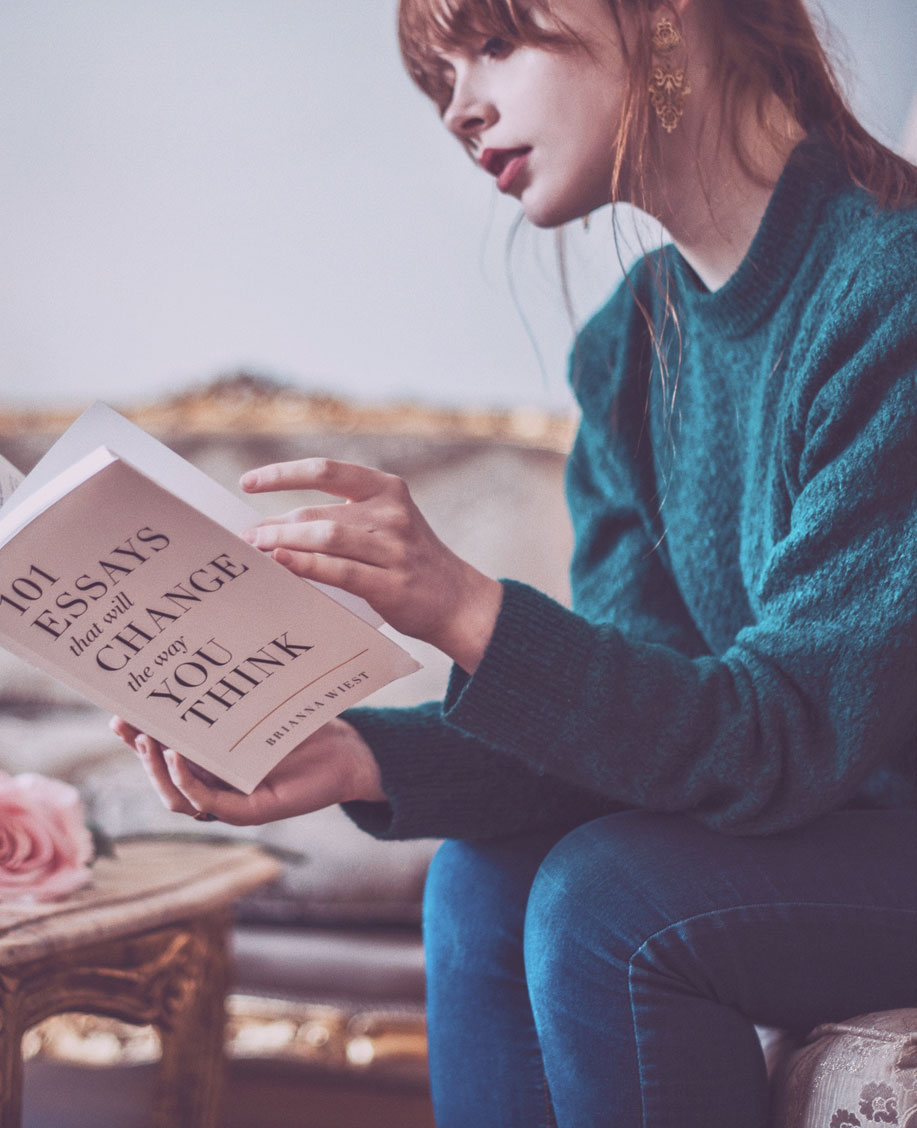
CURIOUS CREATOR PROMPT:
- Pick one thing from your list of curious clues from our writing prompt – now go dive in. Research that topic, find books, articles, videos about that one thing. See what you discover. What does it inspire in you?
“Enjoy every step you take. If you’re curious, there is always something new to be discovered in the backdrop of your daily life.”
― Roy T. Bennett
WORD OF THE MONTH
Curiosity
A strong desire to know or learn something.
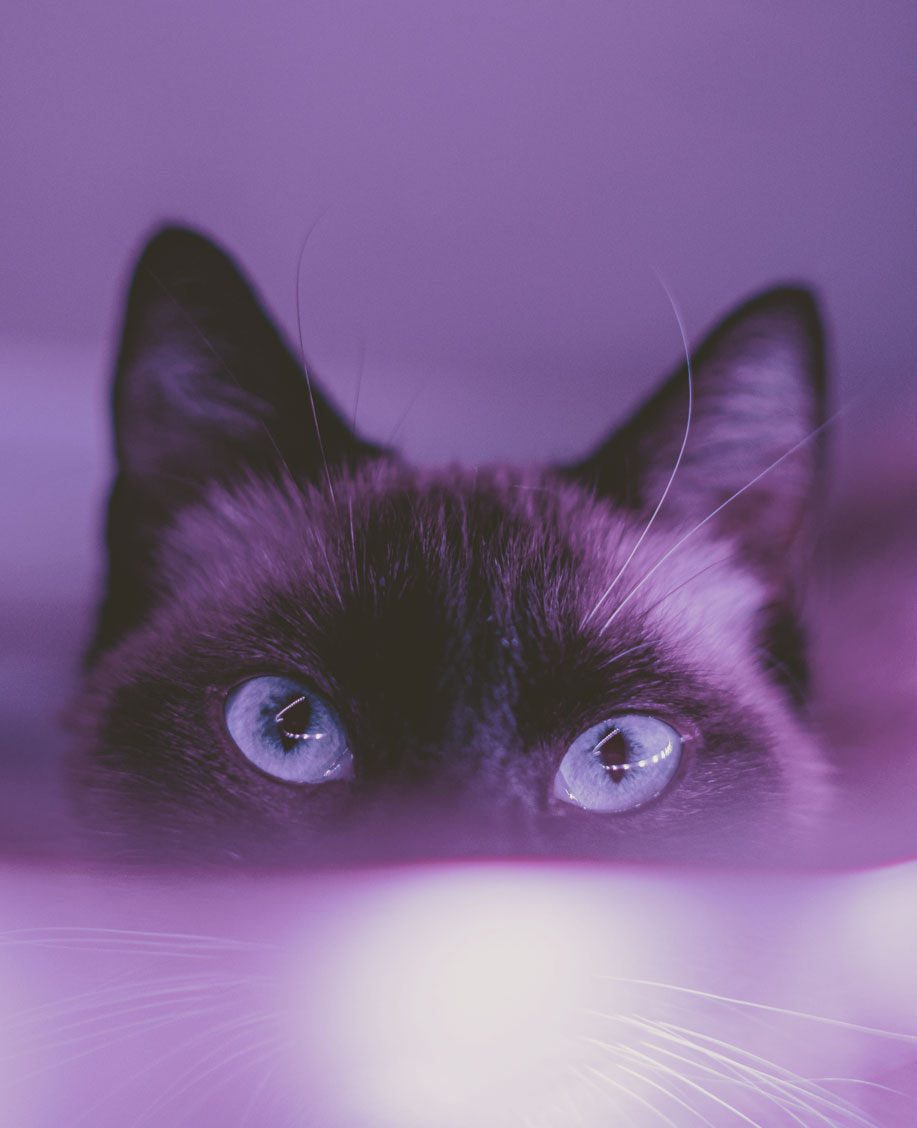
I would further this definition by saying that curiosity is absolutely necessary to creative growth. We must be willing to embrace our curious nature and explore what we do not yet know. Creating art will be of endless satisfaction if you can continually engage in your curiosity.
“Curiosity is the wick in the candle of learning”
– William Arthur Ward
Word of the Month : Curiosity
Be Curious Meditation
Learning to be still and awaken our curiosity is important. Mediation is the perfect way to enhance your connection to this aspect of yourself. Enjoy this sweet mediation via Intention Inspired.
Now relax and enjoy.
“She had an immense curiosity about life, and was constantly staring and wondering.”
― Henry James
Curious about Composition
– PART ONE –
Since curiosity is our theme this month, I thought it would be the perfect time for us to explore composition. This is a topic I’m asked about a lot and while it comes with its “rules” it is, at its core about space and becoming curious about how to divide up that space. We will be exploring the topic of Composition in Parts that I will spread out over the next coming months.
SO WHAT EXACTLY IS COMPOSITION?
Composition in art is essentially the arrangement of visual elements using various principles and techniques. It is the framework or foundational structure of a piece of art. It is also the device with which we guide the viewer’s eye to our focal point. Without composition, a piece can feel unstructured, chaotic or simply boring. Your composition is responsible for the movement, rhythm and flow of your work. There are other aesthetic tools to assist with these things but composition lies at the heart of it.
“A composition is an arrangement, built out of parts, that aims at seamlessness.”
― Eric Maisel
COMPOSITIONAL TECHNIQUES
So to begin, let’s first look at some common techniques seen in artworks. Since Matisse is our Master Artist let’s look to his work to uncover and understand these techniques.
SIMPLIFICATION
Simplification is a great tool that we can employ in our work to create harmony and unity. It is a technique widely used by artists throughout the world. Ultimately, this process involves reducing information or visual clutter to hone in on your focal point.
Some ways to employ this technique –
- Use a limited color palette
- Reduce detail
- Use a limited value range.
- Use larger strokes or areas of color
- Remove unnecessary visual details
Simplification is most effective paired with areas of focused detail. Usually this detail is applied to the focal point and leads the viewer in to take a closer look.
We can see here how Matisse chose to use simplification by limiting his color palette and value range. He has also reduced the detail included in various parts of the space. This draws our attention to the vertical stripes of light and leads our eye out the window and then back down to the chair. The lack of other colors creates a visual unity while the strong line work creates direction and focus. Take some time to observe this piece. What other things do you notice?
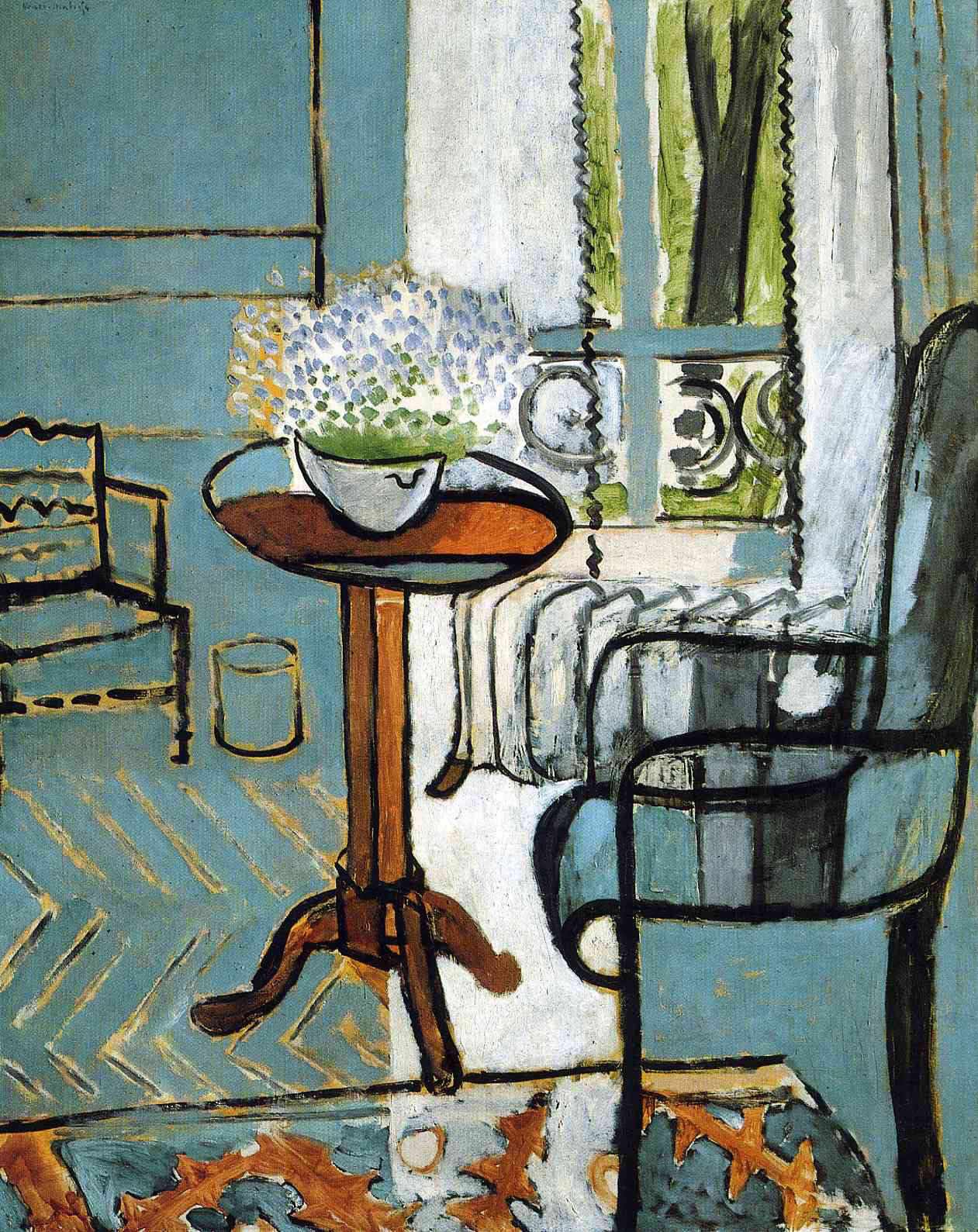
the chair
Henri Matisse – 1916
“I find a single focus in the scene and then play everything off that one thing.”
― Ken Backhaus
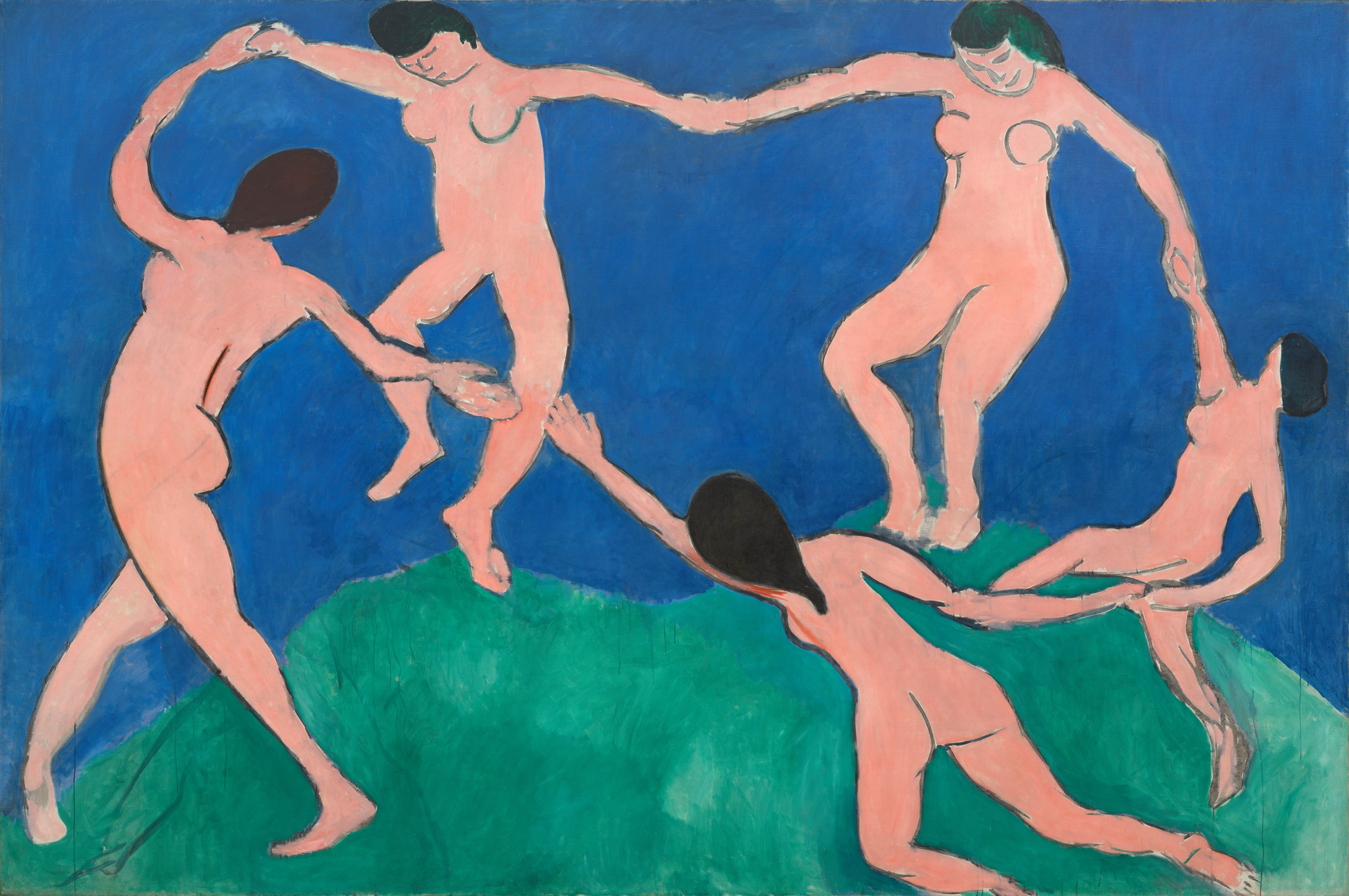
Dance
Henri Matisse – 1910
RULE OF ODDS
The “rule of odds” suggests that an odd number of subjects in an image is more interesting than an even number. Thus if you have more than one subject in your picture, the suggestion is to choose an arrangement with at least three, five or seven elements.
Here in Matisse’s Dancers we can clearly see that 5 figures dominate the composition. Four figures would not have given the same dynamic feel of movement. The bottom figure going slightly off the page, invites us into the circle and swept into the swirl of the dancers.
RULE OF THIRDS
The Rule of Thirds is probably one of the most basic rules that has been used in painting for ages. It is a compositional rule of thumb that is commonly used in the visual arts today including painting, photography and design. The Rule of Thirds is actually a guideline more than a rule. It is intended to help the artist with the placement of the elements and focal point within the composition.
HERE IS HOW THE RULE OF THIRDS WORKS:
- Divide your rectangle or square canvas into nine equal parts
- This creates four points where the lines intersect or ‘hot-spots’ or ‘sweet-spots’
- Studies show that placing objects in these intersections creates a pleasing composition
- Balance in the design can often be achieved by placing a secondary object or counterpoint at the opposing intersection.
- This creates more interest, tension and energy rather than just centering the subject
- Applying the rule of thirds to a painting keeps your composition from being split in half either vertically or horizontally
- Avoids the main focus from the center of the painting like a bull’s-eye.
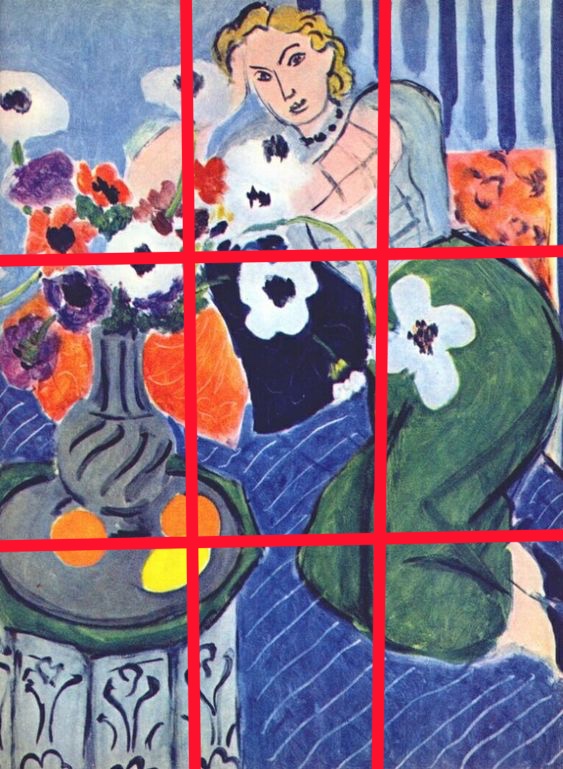
L’Odalisque, Harmonie Bleue
Henri Matisse – 1937
We can see how Matisse may have designed this piece using the rule of thirds. The figure’s face is anchored squarely in the center of the top third. This is balanced by her knees and the table on the axis of the lower third. Important shifts in direction happen at each horizontal third division.
We can also see that in this piece, Matisse has used the triangle format for his composition. This is a commonly used shape structure within design and creates a strong, bold, balanced effect. The vertical shapes of the table and then striped wallpaper keep the viewer inside the framework of the piece while the highly contrasted white flower next to the dark pillow draws us back to the center of the painting and back up to the face.
Take some time to look at this piece and see where your eye takes you. It is important to understand this when designing your own work.
We will explore Part 2 of Curious about Composition in next month’s journal so stay tuned! In the meantime, try these techniques out if you haven’t before!
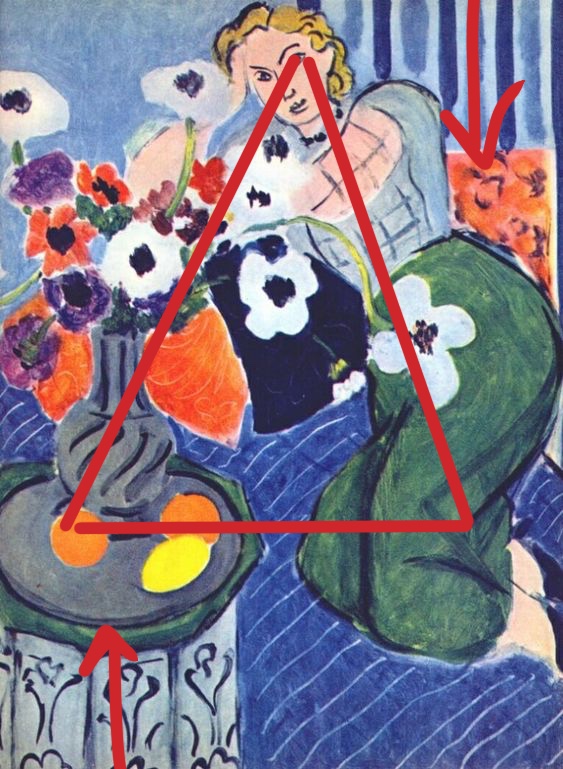
Curious about Composition
Monthly Affirmation
Each month we will have a positive affirmation. I recommend you print out this affirmation and put it in your sketchbook or somewhere in your studio. Recite the affirmation out loud each time you show up to create. Saying words aloud is powerful and can begin to re-write some of our own limiting beliefs or calm our fears. Try it now…
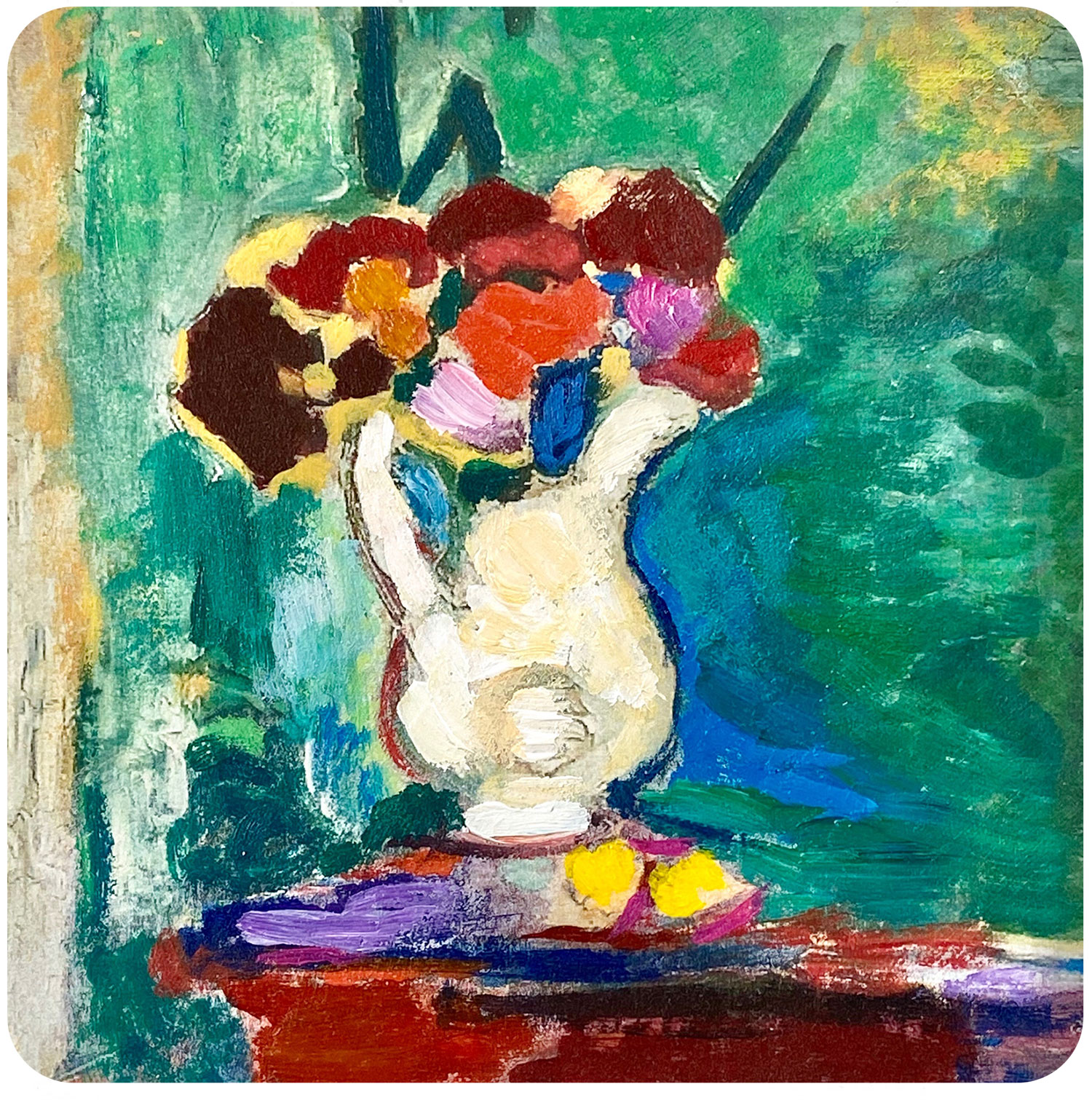
Color Palette of the Month
This month, as we focus on our curious nature, I couldn’t help but be inspired by our monthly Art Master Matisse who’s endless color curiosity is rather exciting. Matisse was passionately fascinated with all things color so let’s get a bit wild and dive into some deep blues, bright reds and oranges, greens, yellow and purples! Mattisse was part of the Fauvist movement – Fauve in French means “wild beasts” and this was in reference to the way the Fauvist artists used color! Roar! Let’s get wild with color and explore what piques our curious hearts! Fauvists often explored complementary colors in their work, wanting the colors to vibrate and react to one another. So play with red and green, blue and orange and yellow and purple. These complementary pairs are seen everywhere in art once you know to look for them!
Color Palette – Fauvism

“It is not enough to place colors, however beautiful, one beside the other; colors must also react on one another. Otherwise, you have cacophony.“
– Henri Matisse
Color Palette
CURIOUS CREATOR PROMPT:
- Choose a medium to explore and experiment with. Try all sorts of things with it. Vary your substrate, your strokes, brushes, tools etc. Play with ONLY this medium for a week! At the end of the week, note what you discovered about this medium! What did you love? Or hate?
MASTER ARTIST GUIDE
Henri Matisse
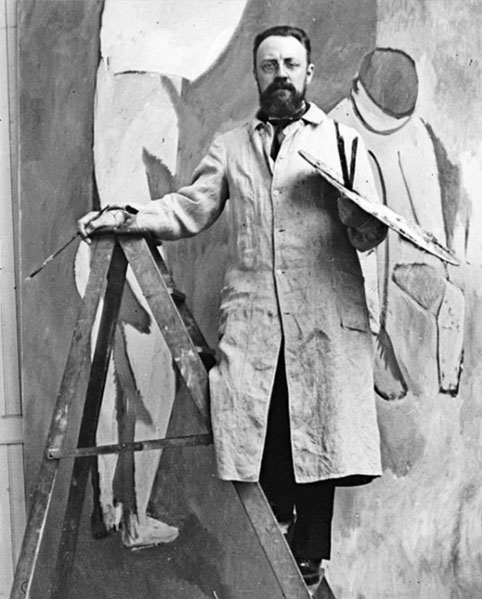
When one thinks of a curious artist, many come to mind but when I look at the depth and breadth of Matisse’s work you can plainly see that this man was wildly curious about all things ART – color, line, form, pattern and shape! He constantly re-invented his art making and never stopped questing after new ways to express himself.
It is interesting to note that Matisse often worked in pairs. He would construct a composition either a still life, a scene or a figurative piece – and then work the subject over twice…sometimes more than that. For example, we can see that in these two still lifes below that Matisse has created the same composition but yet approaches each one very differently.
This is such a wonderful example of his natural curiosity. He wonders “what if?” and then puts it into practice! I love this way of thinking. By truly experiencing different ways of working he gets practical experience and valuable insight into his own creative expression. We can see that one appears unfinished, perhaps he got bored or realized this path wasn’t for him – brilliant! That’s good information to know. Exploring what you enjoy and what you don’t is so important!
I know I can relate to the feeling of wondering what it might be like to work with, let’s say distortion…but then I get fearful that I will create a mess and I don’t try it. Here is where we need to call upon our deep curiosity and push past the fear of failure. To hone in on the desire for only experience, regardless of outcome. Perhaps I would enjoy distortion and maybe I would hate it, but until I try it on, I won’t know.
Matisse was greatly influenced by artists like Paul Cezanne, Pablo Picasso and Paul Gaugain. Each of whom exude the same fiery drive towards discovery. A relentless passion for experimentation and invention. Look at the bodies of works from these artists to see curiosity at work on all levels.
“Why have I never been bored? For more than fifty years I have never ceased to work.”
― Henri Matisse
Alright so let’s learn a little more about the story of dear Matisse
Henri Émile Benoît Matisse was born 31 December 1869 and was a French artist, known for both his use of colour and his fluid and original draughtsmanship. He was a draughtsman, printmaker, and sculptor, but is known primarily as a painter. Matisse is commonly regarded, along with Pablo Picasso, as one of the artists who best helped to define the revolutionary developments in the visual arts throughout the opening decades of the twentieth century, responsible for significant developments in painting and sculpture.
The intense colorism of the works he painted between 1900 and 1905 brought him notoriety as one of the Fauves which translates as wild beasts. Many of his finest works were created in the decade or so after 1906, when he developed a rigorous style that emphasized flattened forms and decorative pattern.
In 1917, he relocated to a suburb of Nice on the French Riviera, and the more relaxed style of his work during the 1920s gained him critical acclaim as an upholder of the classical tradition in French painting. After 1930, he adopted a bolder simplification of form. When ill health in his final years prevented him from painting, he created an important body of work in the medium of cut paper collage.
His mastery of the expressive language of colour and drawing, displayed in a body of work spanning over a half-century, won him recognition as a leading figure in modern art.
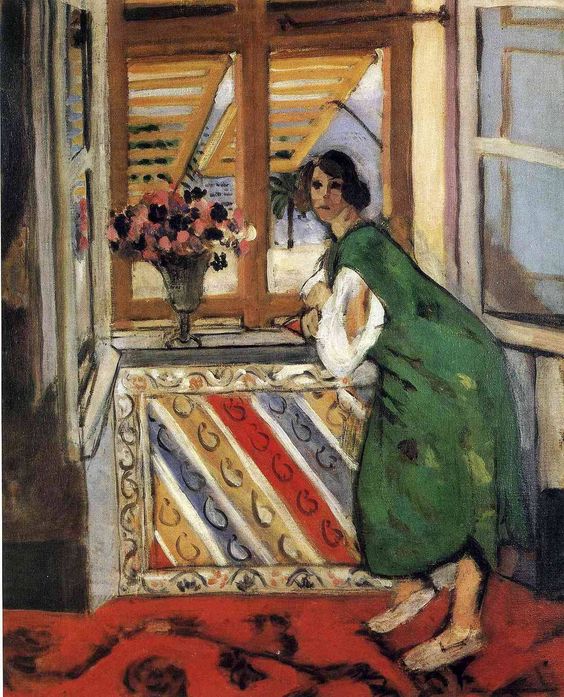
Young girl in Green Dress
Henri Matisse – 1921
“There are always flowers for those who want to see them. “
― Henri Matisse
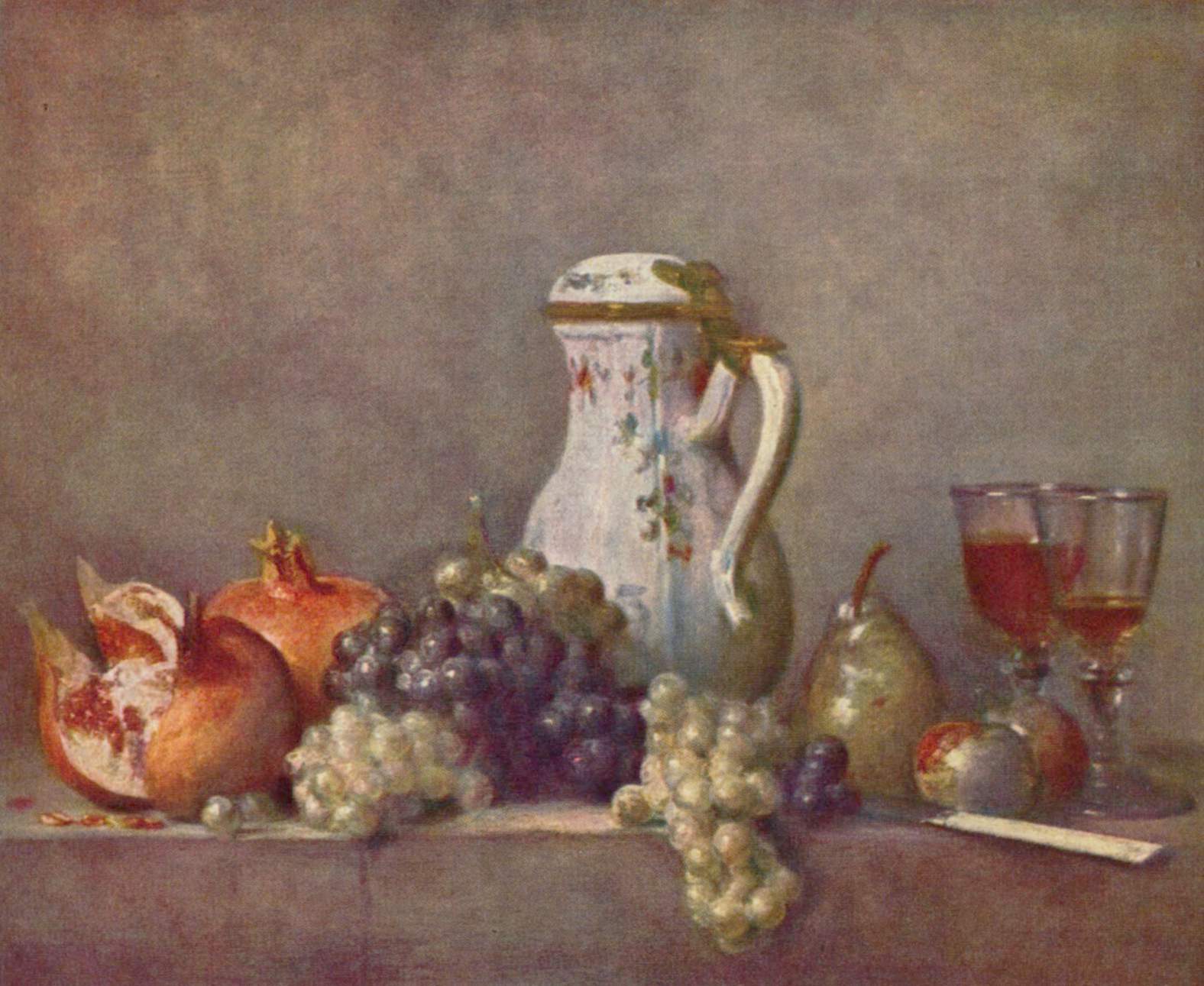
Grape & Pomegranate
Jean-Baptiste Siméon Chardin – 1763
Born to a family of weavers, and growing up in Northern France, as a child Henri Mattise was influenced by the bright colors and patterns of local textiles. However, In 1887, he went to Paris to study law, working as a court administrator after gaining his qualification. He first started to paint in 1889, after his mother brought him art supplies during a period of convalescence following an attack of appendicitis. He discovered “a kind of paradise” as he later described it and decided to become an artist, deeply disappointing his father.
In 1891, he returned to Paris to study art at the Académie Julian and became a student of William-Adolphe Bouguereau and Gustave Moreau. Initially he painted still lifes and landscapes in a traditional style, at which he achieved reasonable proficiency. Matisse was influenced by the works of earlier masters such as Jean-Baptiste-Siméon Chardin, Nicolas Poussin, and Antoine Watteau. Chardin was one of the painters Matisse most admired; as an art student he made copies of four of Chardin’s paintings in the Louvre.
In 1896, Matisse, an unknown art student at the time, visited the Australian painter John Russell on the island Belle Île off the coast of Brittany. Russell introduced him to Impressionism and to the work of Vincent van Gogh—who had been a friend of Russell—and gave him a Van Gogh drawing. Matisse’s style changed completely; abandoning his earth-coloured palette for bright colours. He later said “Russell was my teacher, and Russell explained colour theory to me.”
The same year, Matisse exhibited five paintings in the salon of the Société Nationale des Beaux-Arts, two of which were purchased by the state.
With the model Caroline Joblau, he had a daughter, Marguerite, born in 1894. In 1898, he married Amélie Noellie Parayre; the two raised Marguerite together and had two sons, Jean (born 1899) and Pierre (born 1900). Marguerite and Amélie often served as models for Matisse.
In 1898, on the advice of Camille Pissarro, he went to London to study the paintings of J. M. W. Turner and then went on a trip to Corsica. Upon his return to Paris in February 1899, he worked beside Albert Marquet and met André Derain, Jean Puy, and Jules Flandrin.
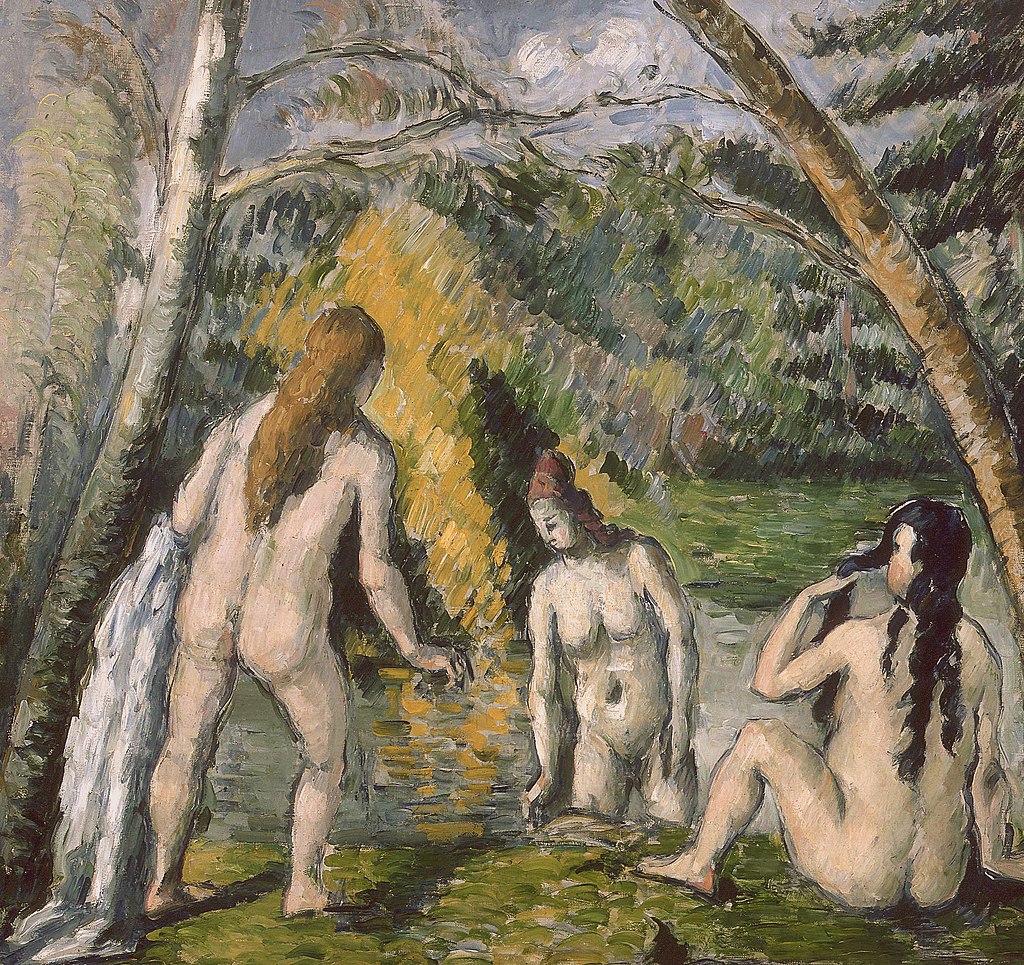
Three Bathers
Paul Cezzane – 1882
Matisse immersed himself in the work of others and went into debt from buying work from painters he admired. The work he hung and displayed in his home included a plaster bust by Rodin, a painting by Gauguin, a drawing by van Gogh, and Cézanne’s Three Bathers. In Cézanne’s sense of pictorial structure and colour, Matisse found his main inspiration.
Enjoy this slide show of his work
“An artist must never be a prisoner. An artist should never be a prisoner of himself, prisoner of style, prisoner of reputation, prisoner of success, etc. “
― Henri Matisse
Learn more about Matisse and his background below…
Here’s a Pinterest board full of his work to inspire you!
Master Artist Guide
The Fauvist Movement
Fauvism as a style began around 1900 and continued beyond 1910. The movement as such lasted only a few years, 1904–1908, and had major three exhibitions. The leaders of the movement were Matisse and André Derain. Matisse’s first solo exhibition was at Ambroise Vollard’s gallery in 1904, without much success. His fondness for bright and expressive colour became more pronounced after he spent the summer of 1904 painting in St. Tropez with the neo-Impressionists Signac and Henri-Edmond Cross. In that year, he painted the most important of his works in the neo-Impressionist style, Luxe, Calme et Volupté.
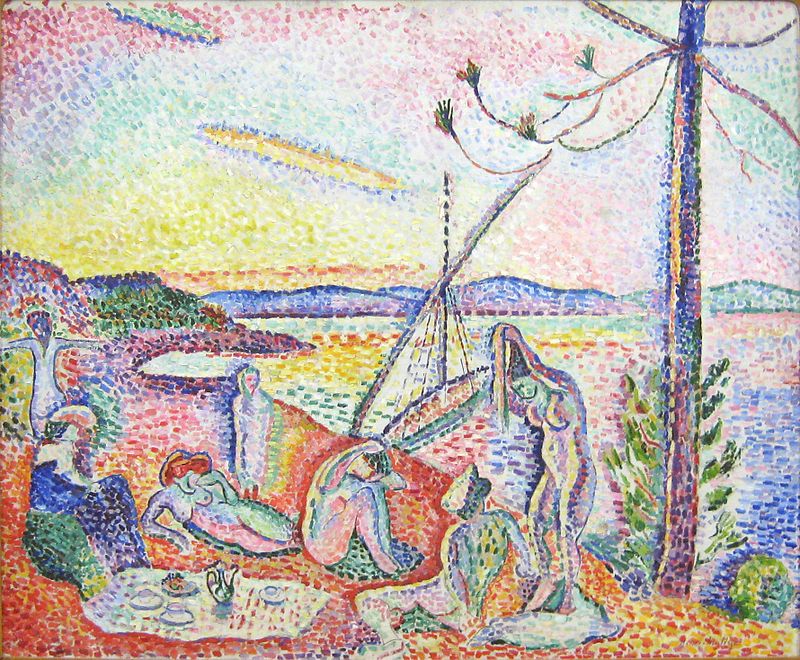
Luxury, Calm & Pleasure
Henri Matisse – 1904
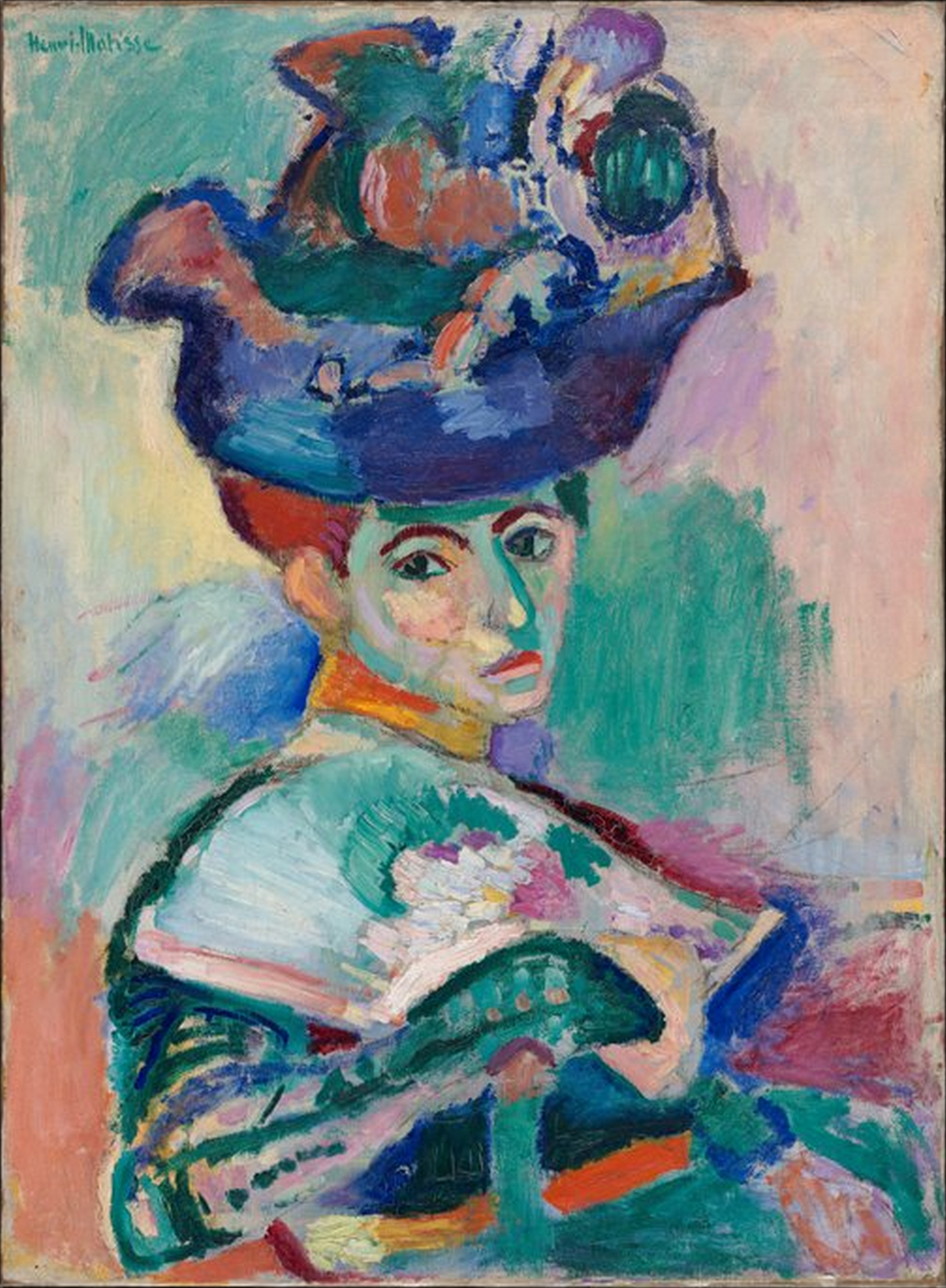
Woman with a Hat
Henri Matisse – 1905
Matisse and a group of artists now known as “Fauves” exhibited together in a room at the Salon d’Automne in 1905. The paintings expressed emotion with wild, often dissonant colours, without regard for the subject’s natural colours. Matisse showed Open Window and Woman with the Hat at the Salon. The exhibition garnered harsh criticism—”A pot of paint has been flung in the face of the public”, said the critic Camille Mauclair. However, when the painting that was singled out for special condemnation, Matisse’s Woman with a Hat, was bought by Gertrude and Leo Stein – this greatly improved Matisse’s artistic standing.
The Symbolist painter Gustave Moreau was the movement’s inspirational teacher. As a professor at the École des Beaux-Arts in Paris, he pushed his students to think outside of the lines of formality and to follow their visions.
Matisse emerged as the leader of the Fauvist group, whose members shared the use of intense color as a vehicle for describing light and space, and who redefined pure color and form as means of communicating the artist’s emotional state. In these regards, Fauvism proved to be an important precursor to Cubism and Expressionism as well as a touchstone for future modes of abstraction.
Key stylistic features –
- “Wild” color with little regard for realism or naturalism
- Broad, flattened strokes of color.Divisionist or pointillism (the separation of color – colors applied separately but close together to create optical mixing)
- Emotional color – painting the feeling rather than the reality of subjects
- Expressive and spontaneous in appearance
- Valued deeply personal expression
- A focus on composition and the way a flat space is divided
- Saturated color
6 FAUVIST ARTISTS TO EXPLORE
- André Derain
- Albert Marquet
- Georges Rouault
- Maurice de Vlaminck
- Georges Braque
- Kees van Dongen
The Fauvist Movement
Sketchbook Explorations
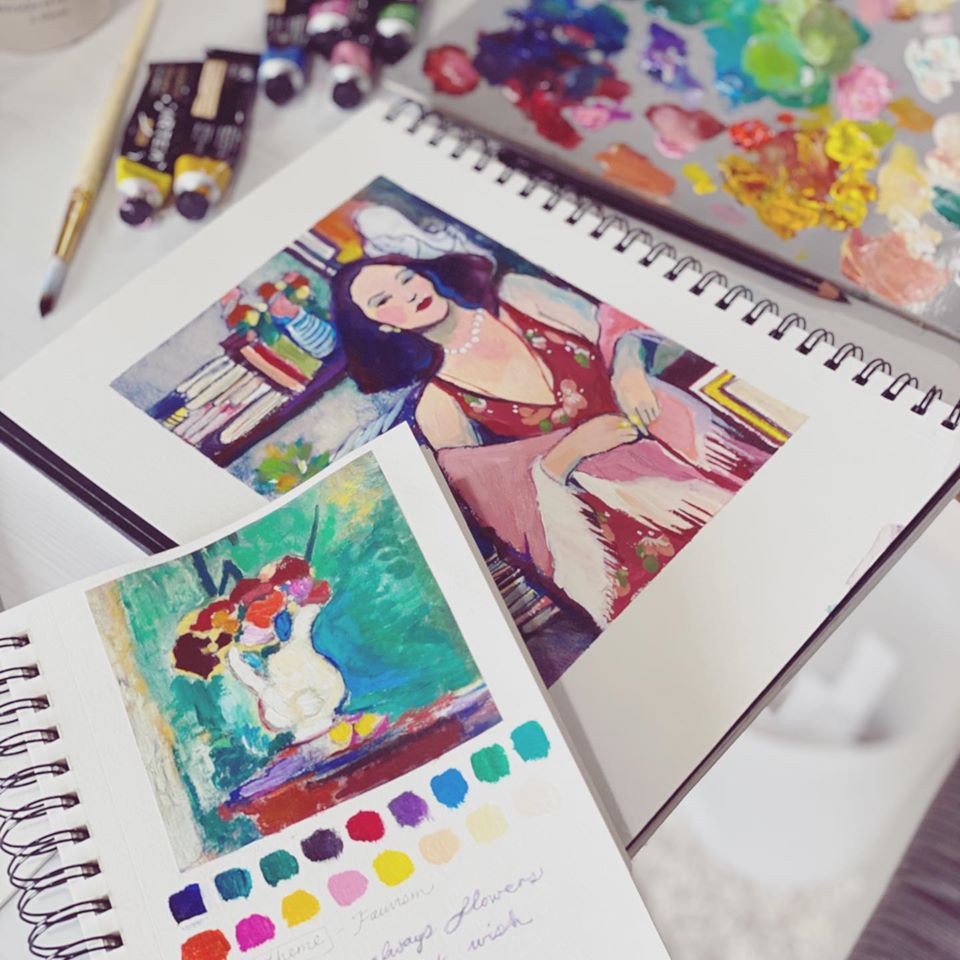
Using your curiosity, Matisse and the Fauvist movement to inspire you, let’s dive into our Sketchbook explorations! Following our study of style last month, this is a deeper look into your curious nature and discovering just what makes your creative muses tick! So have fun and remember to approach our explorations with curiosity not caution!
Please remember, our explorations in our sketchbook are really just access points to get you into the flow. However, they can also be seeds for new ideas, concepts and themes in your art. Some of them will be more about writing and others more about drawing and painting. You will see below three prompts and exercises explained and photographed from my own sketchbook. You are welcome to expand upon, invent and experiment with your own concepts too. Use our color palette if you want to. You will see I stay in that theme for my explorations. These may feel silly at first but let your inner artist play.
EXPLORATION 1
Matisse Master Study
Choose one piece of art created by our Master artist that you connect with or makes your curious. Observe this work and do a study of it. Remember the goal is to more fully understand Matisse’s process and perspective not to recreate a perfect replica.
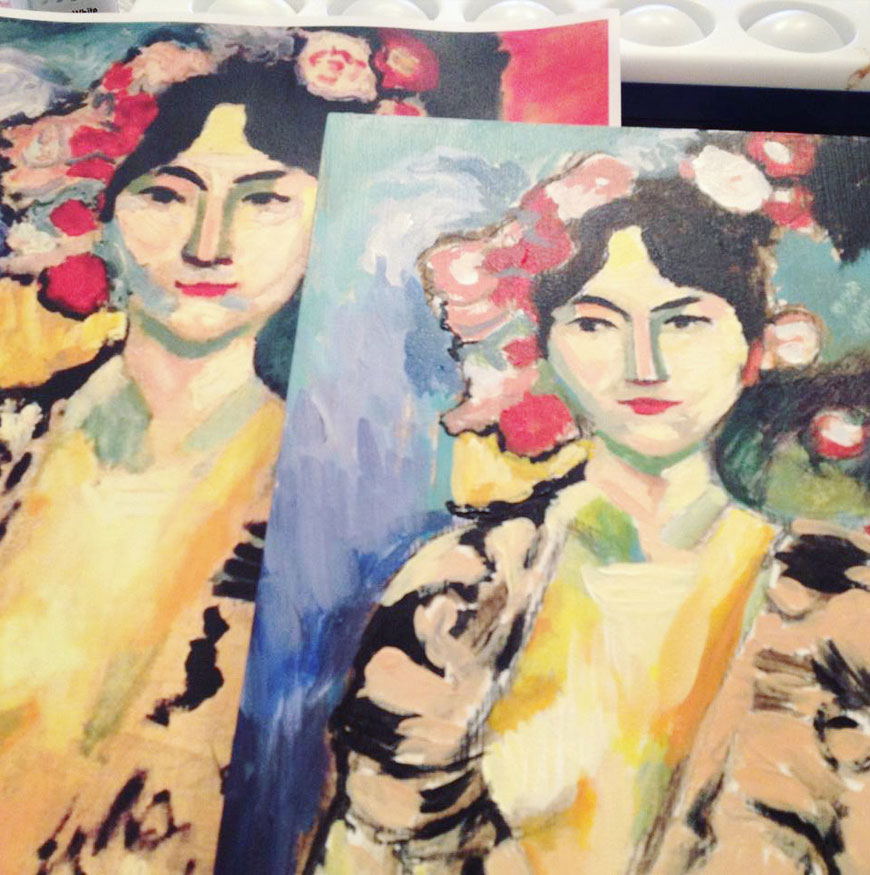
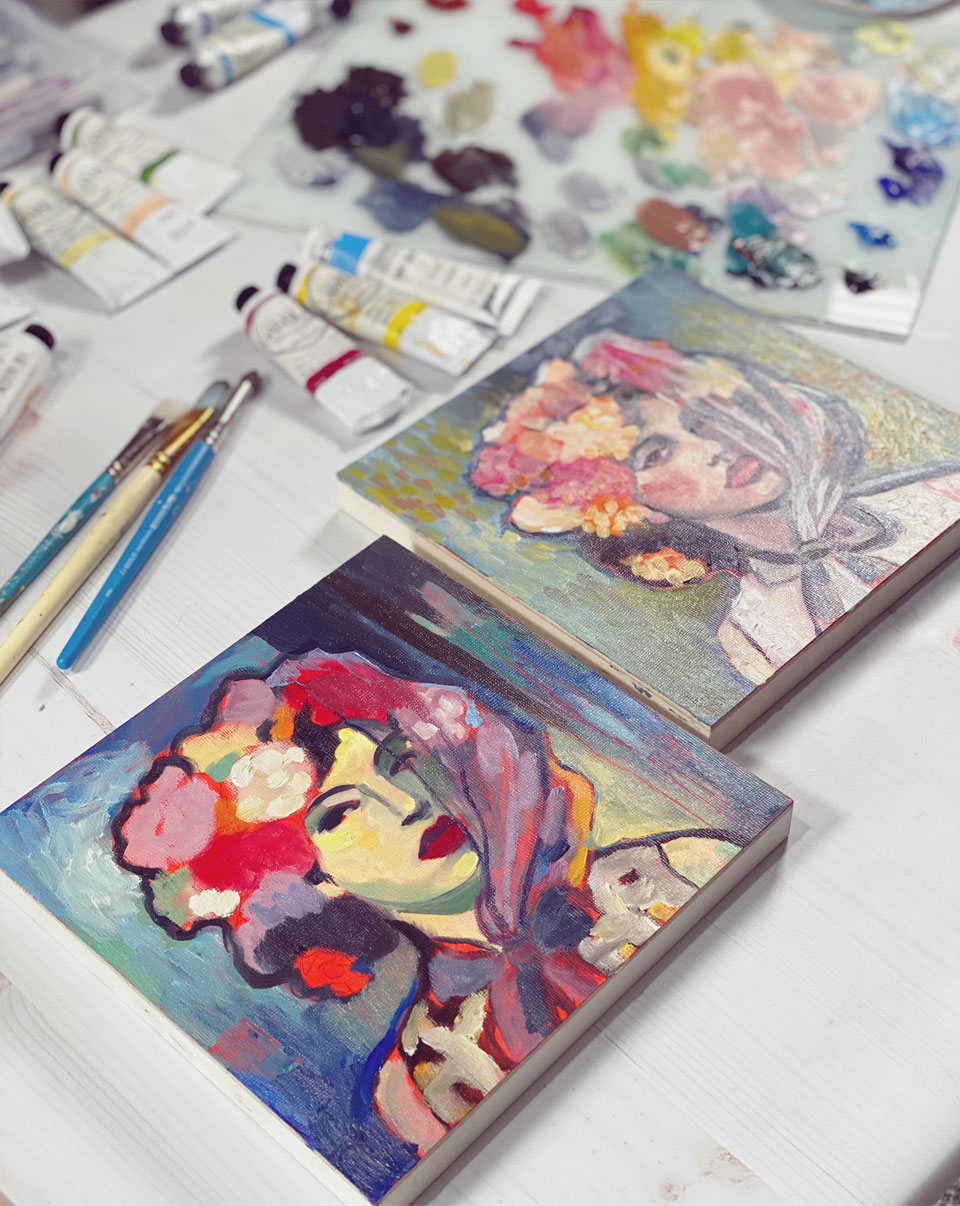
EXPLORATION 2
A Pair
Just like Matisse – lets create two pieces of art simultaneously but approach each one differently. This is a powerful act of curiosity! What if??? You can do a still life, a landscape or a figurative/portrait piece?
Use the same size substrate and the same subject but alter your style, application, color use or composition. See what happens when you go outside your box!
Remember Matisse was a rule breaker so don’t get hung up on perspective or scale. Expression and color were Matisse’s focus! (watch me create my pair in this month’s video lesson!)
EXPLORATION 3
Linework
I adore Matisse’s line drawings. Let’s try one! Get a good reference image. You can check out my curated gallery from Unsplash.com below…
Once you have your image, simplify it to just line. No shading, no color. Be curious about the line and how it creates the suggestion of form. It’s amazing what can be expressed in the simplicity of line. Try a few of these! They are great for training your eye and expressing yourself in a different way!
Refer to our Matisse Pinterest Board if you need more inspiration below…
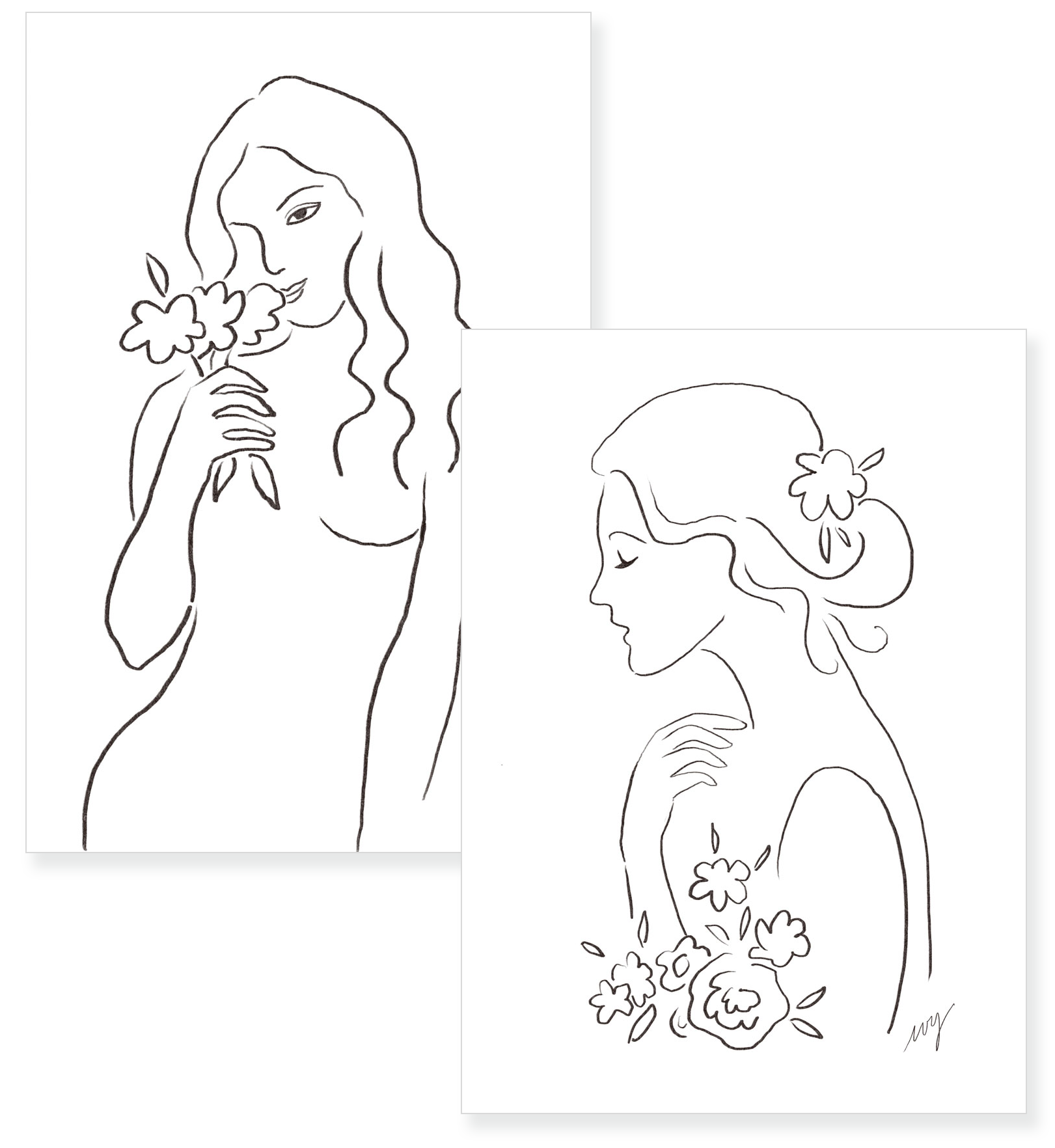
BONUS ACTIVITY
Matisse and Fashion
I especially love Matisse’s figurative work that involves a female figure and lots of color and pattern! I curated a Pinterest board of Fashion photography* that reminds me of his work! I just had to try creating one in his style! Sounds like fun to you? Are you curious what that’s like? Give it go! I can’t wait to see what you create!
Here’s the board to inspire you…
*a note about these images. They are copyrighted images so please create with that in mind. It is not wise to sell images based on someone else’s copyrighted work. So make these for your own personal fun!
Guest Teacher Project
Preparing Your Project
I’m so excited to share this gorgeous lesson by our talented guest teacher – Yvonne Morrell – with you! She’s a fantastic artist and teacher and her work really speaks to our focus this month! Her creations are vibrant expressions full of energy and color. This month she is going to guide you through her process of designing her work. She explores composition and color and shares how you can plan and prepare for your paintings.
Let’s begin…
JUNE ART PROJECT
Painting With Matisse
Matisse often worked in pairs and would create the same composition but in two completely different ways! As we know he was passionately curious and wanted to explore many ways of expressing himself. I believe that this was part of his process, so I wanted to give it a go with you guys this month!
You are going to see me create two radically different portraits simultaneously. This was challenging (and a bit scary) for me but I approached it with curiosity instead of caution and just went for it! The result was a dynamic pair of portraits, both created with colors, marks and styles I don’t usually work in! It was an absolute blast to try this!
I hope you will give it a go! Can’t wait to see what you create!
STUDIOWORKS
Community Corner
I’m happy to share two wonderful lessons contributed from our community members – Jennifer Russel and Monica Stadalski. Both are wonderful artists and terrific teachers! I hope you enjoy these bonus lessons!
Wisdom Cards
BY: JENNIFER RUSSELL
Curiosity is indeed the spark that leads us to wisdom. We also possess an inner wisdom that can help guide us on our creative path. Tapping into that intuitive wisdom can be healing and informative so let’s take a look at how Jennifer Russel creates her own beautiful “wisdom cards” that she uses in her practice. Enjoy!
MAKE YOUR OWN ART JOURNAL
BY: MONICA STADALSKI
Books truly are magical and we reach for them with a curious mind and an open heart. Creating your own special books are truly a treat and Monica Stadalski’s has got a great technique to do just that! Create your very own dreamy sketchbook or art journal with her! Enjoy!
STUDIOWORKS
Submission Calls
If you’d like to be featured in an upcoming Studioworks Journal, we’d love to have you join our Creative Network! Our intention with Studioworks has always been to cultivate community involvement and collaboration. Featuring members from our creative community is such an honor and a beautiful way to share the light you all bring. Come join us!
STUDIOWORKS PODCAST
issue eighteen
You can also listen to this month’s issue of the Studioworks journal. I find I love listening to books, podcasts and music while I draw, paint or go on a long walk. Enjoy.
Studioworks : issue eighteen
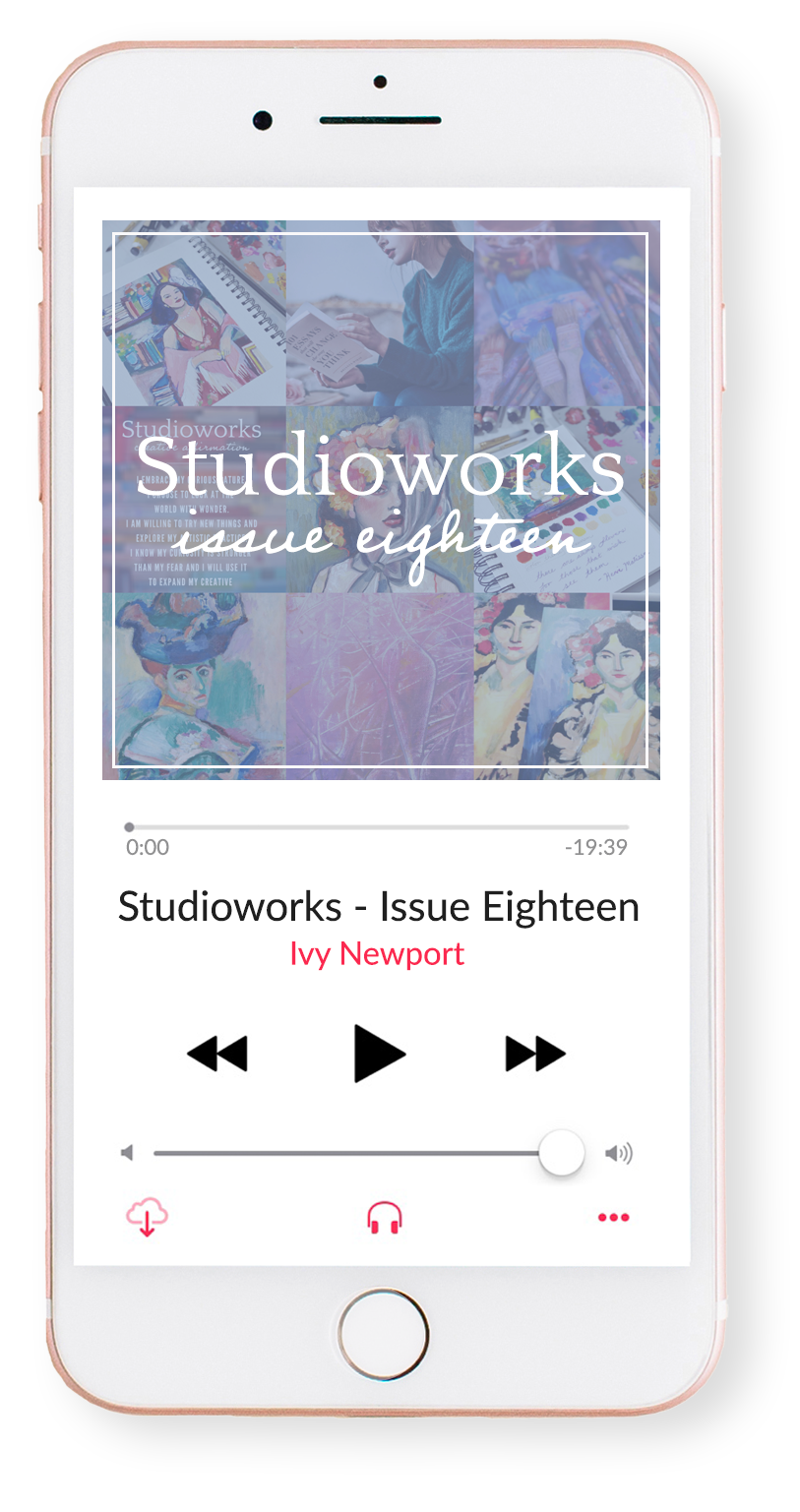
inspiration: curated
One of my favorite things to do is to curate inspiration. From Pinterest boards to books, resources, playlists and more – I love to share anything that might facilitate learning, expansion, and sparks of curiosity! Being an artist, we naturally crave these things so here are some of this month’s picks from me to you.
Books for discovering your creative style
MUSIC PLAYLIST
I had so much fun curating this list. I hope you enjoy!!
PINTEREST BOARDS
INTERESTING ARTICLES & VIDEOS TO CHECK OUT
FAVORITE SUPPLIES THIS MONTH
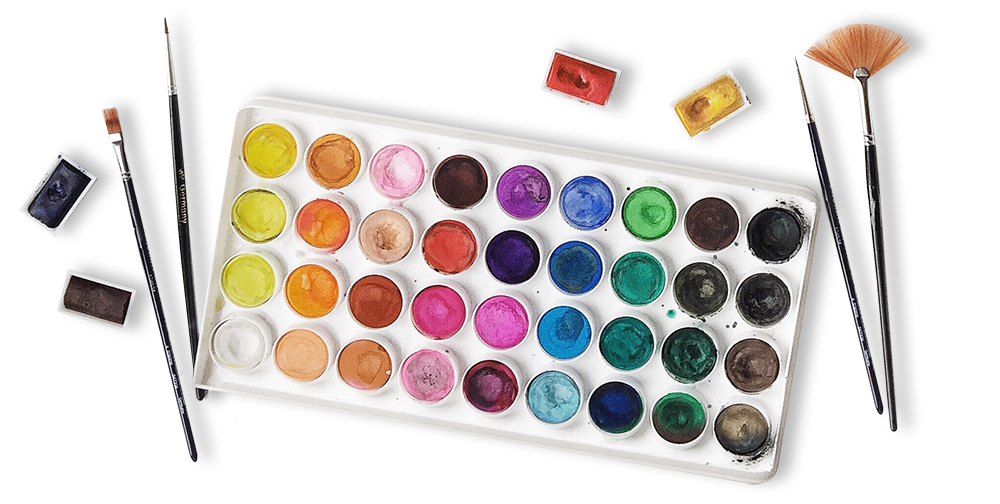
CLASSES TO TRY
These classes carry joy filled learning rooted in nature, art and happiness! I highly recommend checking them out if you haven’t already. Enjoy!

© 2019 IVYNEWPORT, LLC ALL RIGHTS RESERVED.

